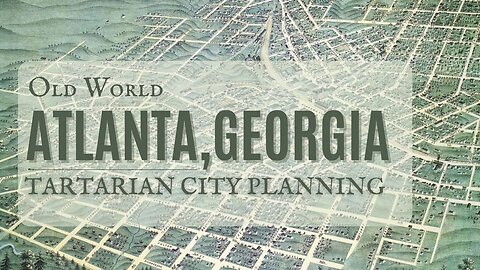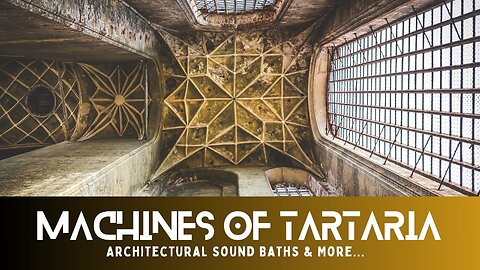Premium Only Content
This video is only available to Rumble Premium subscribers. Subscribe to
enjoy exclusive content and ad-free viewing.
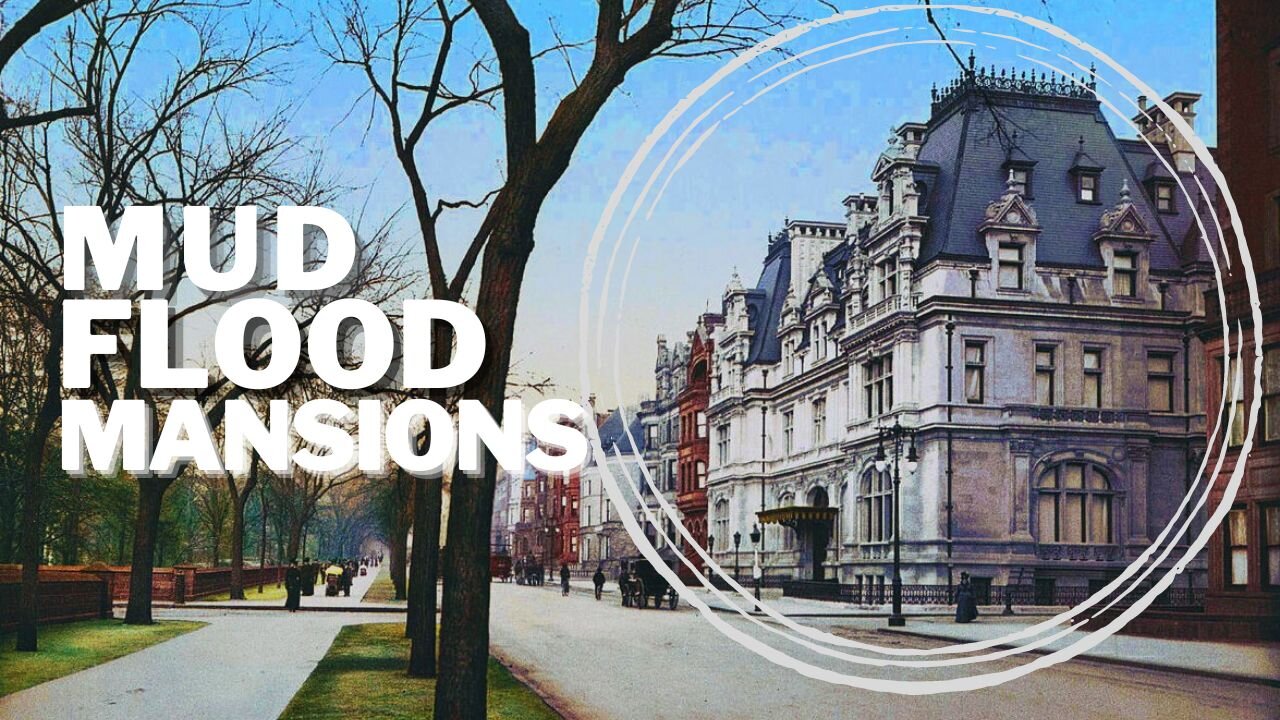
1
Salt Lake City, Utah. 1860. Built or Found? Again, where are the people?
The Aquarius Bus
THE NARRATIVE
The construction of the Salt Lake Tabernacle began in 1863 and was completed in 1867, taking about four years. This iconic building, known for its unique design and remarkable acoustics, has been a central gathering place for the Church of Jesus Christ of Latter-day Saints.
As for the wall around Temple Square, construction started in 1852 and involved building a fourteen-foot wall of sandstone and adobe. The exact duration of this project isn't specified, but it was part of the early efforts to establish and protect the temple grounds.
NOTE: We are also told that the power tool was not invented until 1895 by the German engineering company C&E Fein.
The Salt Lake Tabernacle was primarily designed and constructed under the direction of Henry Grow, a civil engineer known for his innovative use of the lattice-truss arch system. Brigham Young, the president of the Church of Jesus Christ of Latter-day Saints at the time, played a significant role in overseeing the project and ensuring its completion. Truman O. Angell also contributed to the design, particularly with the addition of the gallery in 1870.
The construction involved many skilled craftsmen and laborers from the Latter-day Saint community, reflecting a collective effort to create this iconic structure.
FAKE NEWS
wikipedia.org/wiki/Salt_Lake_Tabernacle
SOURCE
Jon Levi
5
comments
2
Exquisite Old World Philadelphia. Founded 1682. Why Did They Move The Capital to DC?
The Aquarius Bus
"An exploration into the city of Philadelphia considering its unique history as the original capitol of the United States. This city radiates Old-World architecture in many buildings. It seems easier to explain given the longer official historical timeline of its development. However, many of the buildings we look at were supposedly constructed in the 19th to the early 20th century. Was the famed City Hall perhaps a considered "designated" location for the United States capitol?"
SOURCE
Lucius Aurelian
Philadelphia has played an extensive role in United States history. The city was founded in 1682 by William Penn, an English Quaker and advocate of religious freedom. The city served as the capital of the Pennsylvania Colony during the British colonial era and went on to play a historic and vital role as the central meeting place for the nation's founding fathers during the American Revolution and subsequent Revolutionary War.
Philadelphia hosted the First Continental Congress in 1774, preserved the Liberty Bell, and hosted the Second Continental Congress during which the nation's 56 founders formed the Continental Army and elected George Washington as its commander in 1775, and unanimously adopted the Declaration of Independence on July 4, 1776.
For nine months, from September 1777 to June 1778, the city fell under British occupation during the war's Philadelphia campaign. In 1787, the U.S. Constitution was ratified in Philadelphia at the Philadelphia Convention. Philadelphia remained the nation's largest city until 1790, and it served as the nation's first capital from May 10, 1775, until December 12, 1776, and on four subsequent occasions until 1800, when construction of the new national capital in Washington, D.C. was completed.
PHILADELPHIA CITY HALL
The building was designed by Scottish-born architect John McArthur Jr. and Thomas Ustick Walter in the Second Empire style, and was constructed from 1871 to 1901 at a cost of $24 million. City Hall's tower was completed by 1894, although the interior was not finished until 1901. Designed to be the world's tallest building, it was surpassed during construction by the Washington Monument, the Eiffel Tower and the Mole Antonelliana.
The location chosen was one of the five center city urban park squares dedicated by William Penn, that geometrically is the center to the other four squares within Center City renamed as Penn Square. City Hall is a masonry building whose weight is borne by granite and brick walls up to 22 ft (6.7 m) thick. The principal exterior materials are limestone, granite, and marble. The original design called for virtually no sculpture. The stonemason William Struthers and sculptor Alexander Milne Calder were responsible for the more than 250 sculptures, capturing artists, educators, and engineers who embodied American ideals and contributed to this country's genius. The final construction cost was $24 million.
It includes 700 rooms dedicated for uses of various governmental operations. The building structure used over 88 million bricks and thousands of tons of marble and granite. With almost 700 rooms, City Hall is the largest municipal building in the United States and one of the largest in the world.
7
comments
3
Huh? 400-ft. Deep Salt Mine with Carved Balconies Dug During the Middle Ages!
The Aquarius Bus
The Transylvanian Salt Mine, also known as Salina Turda, is a fascinating and unique tourist attraction located in Turda, Transylvania, Romania. This salt mine has a rich history, dating back to antiquity when salt was first extracted from the area. This mine was first mentioned in 1075 during the Middle Ages. The mine is 400 feet deep in parts and contains balconies carved in salt. Today, the mine is an amusement park and Halotherapy center due to the therapeutic properties of salt.
Out of curiosity, I asked Microsoft CoPilot how long it would take to dig hole 400 feet deep and 3 feet wide with a shovel and a pick axe. Here's the reply that I got_
"Digging 400 feet with shovels and pick axes is quite a challenging task and the time it takes can vary significantly based on several factors such as soil type, the number of people working, and their physical condition."
RUDOLPH HALL: This hall is 80 meters long (262 ft.), 50 meters wide (164 ft.), and 40 meters high (131 ft.).
IOSOF MINE: Known as the "Echoes Room" due to its powerful echo, this conical chamber is 112 meters (367 ft.) deep and 67 meters (219 ft.) wide at the base.
CRIVAC ROOM: This room houses a winch called "crivac" or "gepel," which dates back to 1881 and was used to lift salt rocks to the surface.
TEREZIA MINE: A conical mine with impressive underground halls, including a 90-meter (295 ft.) high and 87-meter (285 ft.) diameter chamber.
UNDERGROUND AMUSEMENT PARK: The mine has been transformed into an underground amusement park, offering a unique and memorable experience for visitors.
HALOTHERAPY CENTER: Since 1992, Salina Turda has also served as a halotherapy center, providing therapeutic benefits from the salt-rich environment.
TEMPERATURE: The temperature inside the mine is a chilly 10°C (50 degrees Fahrenheit) to 12°C (53 degrees Fahrenheit0, so it's advisable to wear layers.
Salina Turda
https://en.wikipedia.org/wiki/Salina_Turda
SOURCE
National Geographic
4
A Look At Reclaiming The Old World by Introducing The Industrial Revolution
The Aquarius Bus
"The mainstream account of our recent history relies on cause and effect to explain our present civilization. One of the examples of "incontrovertible evidence" cited is the process of the Industrial Revolution. This process explains how an agrarian civilization of thousands of years of stagnation or at best limitation took the great leap forward to modernity. This exploration examines the account of the Industrial Revolution and considers how there may be another, more plausible explanation behind this stupendous advancement in humanity."
SOURCE
Lucius Aurelian
The Industrial Revolution, sometimes divided into the First Industrial Revolution and Second Industrial Revolution, was a period of global transition of the human economy towards more widespread, efficient and stable manufacturing processes that succeeded the Agricultural Revolution. Beginning in Great Britain, the Industrial Revolution spread to continental Europe and the United States, from around 1760 to about 1820–1840. This transition included going from hand production methods to machines; new chemical manufacturing and iron production processes; the increasing use of water power and steam power; the development of machine tools; and the rise of the mechanized factory system. Output greatly increased, and the result was an unprecedented rise in population and the rate of population growth. The textile industry was the first to use modern production methods and textiles became the dominant industry in terms of employment, value of output, and capital invested.
An economic recession occurred from the late 1830s to the early 1840s when the adoption of the Industrial Revolution's early innovations, such as mechanized spinning and weaving, slowed as their markets matured; and despite the increasing adoption of locomotives, steamboats and steamships, and hot blast iron smelting. New technologies such as the electrical telegraph, widely introduced in the 1840s and 1850s in the United Kingdom and the United States, were not powerful enough to drive high rates of economic growth.
Rapid economic growth began to reoccur after 1870, springing from a new group of innovations in what has been called the Second Industrial Revolution. These included new steel-making processes, mass production, assembly lines, electrical grid systems, the large-scale manufacture of machine tools, and the use of increasingly advanced machinery in steam-powered factories.
1K
views
3
comments
5
The Missing Link Between Hospitals & Asylums During The 1800's.
The Aquarius Bus
"I was born in a workhouse. Exploring hospitals which were once workhouses or asylums, unaware to the public mostly. Looking at my own life and asking questions to the older generations of the family. Explore with me how the workhouse has been repurposed into many other things. This generally applying to the UK - If you were born in a hospital, the chances are high it was once a workhouse."
In Britain and Ireland, a workhouse ("poor-house") was allegedly an institution where those unable to support themselves financially were offered accommodation and employment. They were actually a cover for asylums and prisons. In Scotland, they were usually known as poorhouses. The earliest known use of the term workhouse is from 1631, in an account by the mayor of Abingdon reporting that "we have erected wthn our borough a workhouse to set poorer people to work". They were anything but.
The origins of the workhouse can be traced to the Statute of Cambridge 1388, which attempted to address the labor shortages following the Black Death in England by restricting the movement of laborers, and ultimately led to the state becoming responsible for the support of the poor. However, mass unemployment following the end of the Napoleonic Wars in 1815, the introduction of new technology to replace agricultural workers in particular, and a series of bad harvests, meant that by the early 1830s the established system of poor relief was proving to be unsustainable.
The New Poor Law of 1834 attempted to reverse the economic trend by discouraging the provision of relief to anyone who refused to enter a workhouse. Some Poor Law authorities hoped to run workhouses at a profit by utilizing the free labor of their inmates. Most were employed on tasks such as breaking stones, crushing bonesto produce fertilizer, or picking oakum using a large metal nail known as a spike.
In the mid-1800's, the role of the workhouse was to remove 'undesirables' from society. In the United States, we have a record of 100's of asylums springing up overnight all over the country and at the same time, multitudes of orphans were picked up and put on trains for the midwest (to farm). So, call it what you want. That's what it was.
SOURCE
Deeper Conversations with Chad
1
comment
6
The Coincidental Improbability of Electric Tram Systems Worldwide
The Aquarius Bus
We are told that the world's first electric tram system was invented in 1880 and tested near St. Petersburg, Russia. In North America, Montgomery, Alabama was the first location worldwide said to have a system of electric trams established in 1886. It was known as the "lightning route." (Alabama Power Co.)
The Capital City Street Railway, also known as the Lightning Route, was the first citywide system of streetcars established in Montgomery, Alabama, on April 15, 1886. This early technology was developed by the Belgian-American inventor Charles Joseph Van Depoele. Joseph Arthur Gaboury, a french Canadian from Quebec, was the owner of the horse-drawn system that was converted to electricity. One trolley route ended at the Cloverdale neighborhood. This early public transportation system made Montgomery one of the first cities to "depopulate" its residential areas at the city center through transportation-facilitated suburban development. The system operated for exactly 50 years, until April 15, 1936, when it was retired in a big ceremony and replaced by buses.
"I started to notice a close connection in my research between not only trams, trains, canals, and star forts, but the incredible similarity between these systems all over the world. Historical tram systems, also known as streetcars, keep cropping up, so this video is dedicated to this particular subject!"
SOURCE
Michelle Gibson
If you like my work, I would be appreciative of your support of any amount at Patreon: www.patreon.com/piercingtheveilofillusion
RUBBER BOOM IN MANUAS, BRAZIL
1848. Manuas, Brazil. Electric Trams & Streetlights. In the Middle of The Amazon Rain Forest. No Road Until 1963!
Manaus was at the center of the Amazon region's rubber boom during the late 19th century. For a time, it was "one of the gaudiest cities of the world". Historian Robin Furneaux wrote of this period, "No extravagance, however absurd, deterred" the rubber barons. "If one rubber baron bought a vast yacht, another would install a tame lion in his villa, and a third would water his horse on champagne." The city built a grand opera house, with vast domes and gilded balconies, and using marble, glass, and crystal, from around Europe. The opera house cost ten million (public-funded) dollars. In one season, half the members of one visiting opera troupe died of yellow fever. The opera house, called the Teatro Amazonas, was effectively closed for most of the 20th Century.
When the seeds of the rubber tree were smuggled out of the Amazon region to be cultivated on plantations in Southeast Asia, Brazil and Peru lost their monopoly on the product. The rubber boom ended abruptly, many people left its major cities, and Manaus fell into poverty. The rubber boom had made possible electrification of the city before it was installed in many European cities, but the end of the rubber boom made the generators too expensive to run. The city was not able to generate electricity again for years.
4
comments
7
It's Not Buried but 5 Stories Await You in This Intricate 1498 Underground Temple
The Aquarius Bus
In the middle of the roads, houses, and trees, what is that strange Lingam shaped structure? Is this is a secret government organization or an underground bunker? No. This is a historic structure known as the Adalaj Ni Vav. Almost perfectly aligned along the North – South axis, its design is totally unique. It does not have an entrance on the North side at all, and no entryways in the center of the structure as well. But on this side, it has 3 entrances with steps, in three directions, right to next to one another. Why was such a unique architecture built many centuries ago? What are these three octagonal structures on top?
In a place called Adalaj, there is a strange underground structure. Why was a 75 feet deep, five storied structure built 500 years ago? Who built it? The Adalaj Stepwell takes us through many twists and turns in its history.
Built-in sandstone in the Solanki architectural style, the Adalaj Stepwell is five stories deep. It is octagonal in a plan at the top, built on an intricately carved large number of pillars. Each floor is spacious enough to provide for people to congregate. It was dug deep to access groundwater at that level, accounting for seasonal fluctuations in water level due to rainfall over the years.
The air and light vents in the roofs at various floors and the landing level are in the form of large openings. From the first story level, three staircases lead to the bottom water level of the well, which is considered a unique feature. Built along a north-south axis, the entrance is from the south, and the three staircases are from the south, west, and east directions leading to the landing, which is on the northern side of the well. Four small rooms with oriel windows decorated with minutely carved brackets are provided at the landing level, at the four corners.
The structural system is typically Indian with traditional trabeate with horizontal beams and lintels. At the bottom of the well is a square stepped floor in the shape of a funnel extending to the lowest plane. This is chiseled into a circular well. Above the square floor, columns, beams, walls, and arched openings spiral around, a feature that continues to the top. However, the top part of the well is a vertical space open to the sky. The four corners of the square are strengthened with stone beams, set at 45 degrees angle.
SOURCE
Praveen Mohan
2
comments
8
The Crystal Palace. 1st Photographs. 1851. Glass & Steel. Burnt to The Ground.
The Aquarius Bus
The Crystal Palace was the largest glass building ever constructed upon completion, but furthermore, after the six month long World’s Fair in London, the Crystal Palace was supposedly moved, piece by piece, and rebuilt in Sydenham from 1852 through 1854.
The true nature of the original Crystal Palace is still up for debate, as only a handful of photographs survive of the structure. We will look through these images today, attributed mostly to Philip Henry Delemotte, who was commissioned to photograph the process. Let’s see what we can deduce from these images.
THE NARRATIVE
The Crystal Palace was a cast iron and plate glass structure, originally built in Hyde Park, London, to house the Great Exhibition of 1851. The exhibition took place from 1 May to 15 October 1851, and more than 14,000 exhibitors from around the world gathered in its 990,000-square-foot exhibition space to display examples of technology developed in the Industrial Revolution. Designed by Sir Joseph Paxton, the Great Exhibition building was 1,851 feet long, with an interior height of 128 feet, and was three times the size of St Paul's Cathedral.
The 60,000 panes of glass were manufactured by the Chance Brothers. The 990,000-square-foot building with its 128-foot-high ceiling was completed in thirty-nine weeks [9.5 months]. The Crystal Palace boasted the greatest area of glass ever seen in a building. It astonished visitors with its clear walls and ceilings that did not require interior lights.
After the exhibition, the Palace was relocated to an open area of South London known as Penge Place. It was rebuilt at the top of Penge Peak next to Sydenham Hill, an affluent suburb of large villas. It stood there from June 1854 until its destruction by fire in November 1936. The nearby residential area was renamed Crystal Palace after the landmark.
Constructed: 1851 in approximately 9.5 months
Relocated: 1854, disassembled and moved to South London, reassembled
Destroyed: November, 1936. Fire. Burnt all the steel and glass to the ground.
SOURCE
Jarid Boosters
9
What Happened In San Francisco During The 1800's? Official Narrative Dismantled.
The Aquarius Bus
► Synopsis: This series brings to light media and files that have never before been accessible to the public, offering a fresh perspective on ancient civilizations and forgotten narratives. From rare photographs and videos to expert analysis and compelling theories, "Russian Chronicles" challenges conventional history and invites viewers to question what they know about our world's past.
FROM 'THE WEB'
During the California Gold Rush in the mid-19th century, San Francisco experienced a massive influx of people and rapid urban development. This led to a unique phenomenon where houses were transported from Europe to San Francisco by ship.
In the 1850s, the demand for housing in San Francisco skyrocketed due to the sudden population boom. To meet this demand, pre-fabricated houses were shipped from Europe, particularly from places like England. These houses were often made of wood and stone and were designed to be easily assembled upon arrival.
The houses were transported as cargo on wooden clipper ships, which were known for their speed and efficiency. Once they arrived in San Francisco, the houses were quickly reassembled to provide immediate shelter for the new residents. This method of transporting and assembling houses helped to rapidly expand the city's infrastructure during a time of intense growth.
It's fascinating to think about how these pre-fabricated houses played a role in shaping the early architecture and development of San Francisco. If you have any more questions or need further details, feel free to ask!
THE GOLDEN ERA, 1848-1853
"At the height of the Gold Rush, in February 1852, the U.S. Coast Survey published a map of every house, warehouse, wharf, street, fence, windmill, sandhill, mudflat, creek and line of vegetation in San Francisco and its environs (see map, below). The astonishing degree of development above Market Street, around Yerba Buena Cove, is an enormous contrast to the nearly deserted marshlands near the Mission."
by Nancy J. Olmsted
foundsf.org/index.php?title=The_Golden_Era,_1848-1853
SOURCE
Streets of Tartaria
7
comments
10
Over 100 Miles of Streets Discovered Underneath Detroit, MI. In 1895!
The Aquarius Bus
In any case, did you realize that at one time, Detroit had a substantial common laborers industry appropriate underneath their city's avenues? Detroit had a huge salt mine that was fundamentally an underground industry underneath their city. It was more than 1,500 acres of land huge and had more than 100 miles of streets making up this underground salt mine.
This mine extends from Dearborn to Allen Park. The mines were possessed and worked by The Detroit Salt and Manufacturing Company. It was blasting from the mid 1920s up until 1983, when it was compelled to close because of the falling salt costs.
At the point when business was great, they offered open guided visits, which was extremely mainstream with school gatherings. You can at present observe the passageway at 12841 Sanders Street, yet it's open for conveyance trucks.
VIDEO SOURCE
Factosiya
The Detroit Salt Mine, located 1,100 feet below Detroit, Michigan, covers an area of approximately 1,500 acres underground. The mine extends beneath the Dearborn and River Rouge area, where around 100 miles of roads and 1,500 acres of excavated space lie 1,200 feet below the surface. This vast network of underground tunnels and chambers has been mined for more than a century. It's a fascinating example of the industrial history and geological features of the region.
Detroit Salt Company
http://detroitsalt.com/
THE NARRATIVE
"In the early days of the mine, around 1910, the initial excavation was done using traditional mining techniques and equipment of the time. This would have included manual labor, pickaxes, shovels, and possibly some early mechanical drills."
A century ago, the excavation of the Detroit Salt Mine was a significant engineering challenge. The equipment used had to be specially designed to operate in the unique conditions of the mine. In the early days of the mine, around 1910, the initial excavation was done using traditional mining techniques and equipment of the time. This would have included manual labor, pickaxes, shovels, and possibly some early mechanical drills.
By 1922, the company began to dig a larger, second shaft to increase the rate of hoisting rock salt to the surface. Every piece of equipment used today has been lowered down the second shaft. One of the many problems with working in such a deep mine was that equipment had to be lowered down the narrow shaft in pieces, then assembled at the bottom.
Even animals were used in the mining process. Donkeys, for example, were lowered down to work, and never brought back up. They were likely used to haul salt and equipment through the mine's tunnels.
As technology advanced, more modern equipment was introduced. This included electric locomotives and mechanical shovels, which significantly improved productivity. These advancements reduced the physical demands of miners and allowed for the extraction of larger quantities of salt.
It's important to note that the specific types of equipment used could vary based on the particular needs of the mine and the technology available at the time.
NARRATIVE SOURCE
The vast, abandoned salt mines that lurk beneath Detroit
https://gizmodo.com/the-vast-abandoned-salt-mines-that-lurk-beneath-detroi-5911837
11
These Look Like Old World Palaces ... They're Telling Us They're Just Caves.
The Aquarius Bus
Today, we go to multiple sets of so called caves, located all over India. We are told that these caves were found in the 1800's. Yet they know all about their history. We are told that they accidentally found them while Tiger Hunting, yet they are attempting to block them from the public today. Are we sure that these are carved into the rock? Or have we located massive palaces that hold the same Old World technology inside their doors...hundreds of miles apart...all found in the same years..."accidentally". Welcome to Episode 73.
SOURCE
My Lunch Break
Fergusson 'discovers' The Cave Temples of India
(the msm narrative)
James Fergusson (1808-1886) was a Scottish architectural historian who made significant contributions to the study of Indian architecture, particularly cave temples. He is best known for his work on documenting and analyzing the cave temples of India, which are rock-cut structures used for religious purposes, primarily by Buddhists, Hindus, and Jains.
Fergusson's interest in Indian architecture led him to travel extensively across India, where he meticulously studied and recorded various architectural sites. His most notable work, "The Cave Temples of India," was published in collaboration with archaeologist James Burgess in 1880. This comprehensive study provided detailed descriptions, drawings, and analyses of numerous cave temples, highlighting their historical and architectural significance.
SOURCE
The cave temples of India:
Fergusson, James, 1808-1886
archive.org
https://archive.org/details/cavetemplesofind00ferguoft
THE BHAJA CAVES
The Bhaja Caves, also known as Bhaje Caves, are a group of 22 rock-cut caves located in the Pune district of Maharashtra, India. These caves date back to the 2nd century BCE and are among the oldest Buddhist caves in India. They were built during the Satavahana period and were used by Buddhist monks for meditation and worship.
CHAITYA HALL The most significant attraction in the Bhaja Caves is the Chaitya Hall, a large hall with a stupa at one end and wooden ribs on the roof. The ribs are considered to be the oldest surviving wooden architecture in the world.
SCULPTURES The caves have several sculptures of Buddha, Bodhisattvas, and other deities, depicting various scenes from the life of Buddha. These sculptures are highly detailed and showcase the skill and artistry of the artisans of that era.
WATER CISTERNS The caves also have several water cisterns that were used to collect rainwater. These cisterns are a testament to the advanced water harvesting techniques used in ancient India.
ARCHITECTURAL INFLUENCE The Bhaja Caves are significant not only for their religious and historical importance but also for their influence on the development of rock-cut architecture in India. The intricate carvings and sculptures on the walls of the caves provide insight into the lifestyle of Buddhist monks and their practices.
SOURCES
Bhaja Caves
https://en.wikipedia.org/wiki/Bhaja_Caves
A Gateway to the Ancient Buddhist Era
https://architecturejourneys.com/bhaja-caves-a-gateway-to-the-ancient-buddhist-era/
12
Underground Eureka Springs, Arkansas • Where Basements Have Basements
The Aquarius Bus
It amazes me the stories that are put there, intended for us to believe and unfortunately, most people don't think through these explanations. They want us to believe that a little town, in the northern mountains of Arkansas, in the 1890's raised their streets. At a time when they were using horses and buggies. No power tools. And they also want us to believe that these tunnels, underneath other tunnels under the streets were created from fast flowing water. What a work of art!
• • •
According to local history, two major streets in downtown Eureka Springs underwent considerable re-engineering in the year 1890. Main Street was the first official "street" in town, built in a low level gulch, alongside a small spring-fed creek. It suffered from frequent runoff problems and quickly earned the nickname "Mud" Street, hence the need for improvements. The second street in town requiring attention was Spring Street, as it was also becoming a main thoroughfare for carriage traffic. Today, it serves as the primary route for much of Eureka's Historic Loop.
These significant road improvements reportedly raised the overall level of the two streets and required that a number of businesses along Spring Street and Main Street create new entrances on the second floor, thereby making basements out of the once street-level facades. These original entrance levels were walled off and now lie hidden within a string of disconnected subterranean limestone tunnels. Over the years these mysterious and somewhat dangerous passageways have become known as "Underground Eureka".
SOURCE
40/29 News
Underground Eureka Springs
https://undergroundeureka.com/
3
comments
13
Do We Know Who Really Built the Parthenon in Nashville, Tennessee?
The Aquarius Bus
An exploration into the Old-World structures in the city of Nashville in Tennessee. Nashville is referred to as the Athens of the South supposedly for the plethora of educational facilities. The origin of this name may have a different meaning with the presence of some clear Old-World and questionable structures with even more questionable accounts from our friends who document these aspects so well!
VIDEO SOURCE
Lucius Aurelian
Nashville, Tennessee, is often referred to as the "Athens of the South" due to its dedication to higher education. The city earned this nickname in the 1850s and it was perpetuated in a few other ways, such as the building of the Greek-Revival-styled State Capitol and the Tennessee Centennial Exposition, including about Nashville's iconic Parthenon building.
The Parthenon in Nashville is a full-scale 'claimed' replica of the original Parthenon in Athens, Greece. It was designed by architect William Crawford Smith and built in 1897 as part of the Tennessee Centennial Exposition. [construction photos?] This event celebrated the 100th anniversary of Tennessee’s entry into the union. The Parthenon was unique in that it was the only building in the Exposition that was an exact 'replica' of its original.
THE NARRATIVE: The first version of the Parthenon replica was not built to last long after the Exposition, but it quickly gained popularity among residents and tourists alike. As a result, it was rebuilt in 1920 in order to serve as a lasting monument to classical architecture. Today, it remains the only full-scale replica of the Parthenon in the world.
In addition to drawing admiration for its architecture, today the Parthenon also functions as a thriving art museum. Visitors can enjoy the museum’s core collection of 63 different 19th and 20th century American paintings, as well as a rotating assortment of temporary exhibits. The most significant feature of the Nashville Parthenon is its exact replica of the Athena statue that once served as the centerpiece of the ancient Greek original. Like her predecessor, the Nashville Athena is 42 feet (or, to be precise, 41 feet and 10 inches) tall; this makes her the Western Hemisphere’s tallest indoor statue.
So, Nashville's homage to classical Greek architecture through the Parthenon contribute to its nickname as the "Athens of the South".
NARRATIVE SOURCE
So, Why is the Parthenon in Nashville?
https://nashvillego.com/activities/guides/why-is-the-parthenon-in-nashville
1
comment
14
Visiting American Insane Asylums & Reset Prisons During The 1800's
The Aquarius Bus
Below is the narrative fed to us through our history. Tread lightly through the script, as the pictures tell a different story. The formation of insane asylums in North America during the 1800s was a significant development in the 'treatment' of dissenters and non-believers. It appears that they were possibly also 'Reset Prisons' where dissenters were captured, placed, separated from family and worked to death. History tends to denote them as 'asylums' for the masses of people who allegedly went insane (for some reason) after they immigrated here and had families.
Reset Prisons were more rehabilitative than harshly punitive, so the story goes. Abductees were prohibited from talking at all times, confined in separate cells at night, and then labored together during the day in workshops modeled on the industrial factory!
EARLY ASYLUMS: Some asylums were established long before the 1800s, but they became far more widespread and popular during this time period. Traditionally, people suffering from mental illness were primarily treated at home by their families. However, in many cases, families were incapable of providing adequate care, and oftentimes mentally ill people would become destitute and homeless. Asylums were developed with the intention of offering support and safety to people in these circumstances.
PHILANTHROPIC DREAMS: Asylums started out as philanthropic dreams, rather than psychiatric nightmares. The concept was born in the mid-1800s, when socially minded citizens, dismayed by the often dismal lot of the mentally unstable, paid for dozens of institutions to be constructed for their care. By 1880, 139 had been built in the US.
TREATMENT METHODS: Early asylums are known for their use of harsh treatment methods and terrible living conditions. However, for a time, asylums focused on treating patients with kindness and respect, in the hope that the parts of their minds that remained rational would respond and their conditions would improve. These efforts, while admirable, ultimately fell apart at the close of the century as asylums throughout Europe and America became overwhelmed.
FIRST ASYLUMS: The first asylum influenced by the York Retreat was the Friends Asylum near Frankford, Pennsylvania, established in 1817. The Hartford Retreat in Connecticut appeared the same year, while the McLean Asylum for the Insane was established in Boston the following year.
NEW YORK HOSPITAL: The New York Hospital opened a ward for "curable" insane patients. In 1808, a free-standing medical facility was built nearby for the humane treatment of the mentally ill, and in 1821 a larger facility called the Bloomingdale Asylum was built in what is now the Upper West Side.
This period marked a significant shift in societal attitudes towards mental health, with a move towards institutional care and treatment. However, the conditions and treatment methods in these asylums were often far from ideal, and they have been the subject of much criticism and reform in the years since.
SOURCE
Old Scary World
3
comments
15
The Concealed History of The Chattanooga Tennessee Underground
The Aquarius Bus
The Chattanooga Underground in Tennessee is a fascinating part of the city's history. It's essentially a below-ground area underground that no one can conclusively identify when it was built or who built it much less why it's there.
In the 1970s, University of Tennessee at Chattanooga professor Jeff Brown started discovering what would later be known as "Underground Chattanooga". He noticed buildings that had doorways leading to nowhere and storefronts located at basement level that appeared to have been first floors previously.
The theory is that between 1875 and 1905, the city built up its roads and turned the first floor stories of buildings into basements to escape flooding, disease, and yellow fever. After the flood of 1867, the city continued to experience bouts of flooding and so citizens turned first floors of buildings into basements to prevent further flood damage.
The only concrete evidence of this happening are newspaper articles that were released showing city leaders’ plans to raise the street levels by 3 to 15 feet. [mudflood?] According to those same newspaper articles, 40 blocks of downtown Chattanooga were raised, and this prompted the Tennessee Valley Authority Act of 1933, which resulted in the Chickamauga Dam being built. It helped regulate water levels to prevent the downtown area from flooding.
The Lovemans building downtown is said to be the “ground zero” of underground Chattanooga. The 130-year-old building is made from cinder block, bricks, and limestone, with outer walls that have the same mysterious doorways and windows that Jeff Brown discovered.
Despite the intriguing clues and theories, there is very little documentation available and the exact method and materials used to raise the city are still disputed. This makes the Chattanooga Underground a captivating mystery of urban archaeology.
Explore the history of Chattanooga as Jamal Williams and Kay Blevins go beneath the streets of downtown to find Underground Chattanooga in this three part series.
The Narrative
Underground Chattanooga
https://en.wikipedia.org/wiki/Underground_Chattanooga
VIDEO SOURCE
WDEF News 12
1.85K
views
1
comment
16
The Last Remaining U.S. Old World City - New Orleans, Louisiana
The Aquarius Bus
An exploration of the incredible Old-World city of New Orleans. This beautiful city features unique sites and buildings reflecting an astounding account of development, beauty and culture. What mysteries of the Old-World can be found in this city that stands as the Last Old-World City?
SOURCE
Lucius Aurelian
NEW ORLEANS UNIQUE ARCHITECTURE
New Orleans has many styles of architecture and some are only found in Louisiana. The usual suspects would be Classical, Gothic, Byzantine, Romanesque, Vernacular, Victorian, Neoclassical, Art Deco, Spanish Colonial, Georgian, Italianate, Greek Revival, Beaux-Arts, American Craftsman, Gothic Revival, Colonial Revival, Queen Anne and Federal. Of geographic interest specific to New Orleans would be Creole, Creole Cottages and Bungalows, American Townhouses and the iconic Shotgun Houses.
CREOLE COTTAGES: These are scattered throughout the city, with most being built between 1790 and 1860. They are 1½-story, set at ground level, with a steeply pitched roof, a symmetrical four-opening façade wall, and a wood or stucco exterior. They are often called Bungalows in the area.
AMERICAN TOWNHOUSES: Many buildings in this style were built around 1820's to 1860's and can be found in the Central Business District and Lower Garden District. They are narrow, three-story structures made of stucco or brick.
CREOLE TOWNHOMES: These were built after the Great New Orleans Fire (1788), until the mid-19th century based on an influx of creoles from not only Louisiana but the Caribbean Islands. They have courtyards, thick walls, arcades, and cast-iron balconies. The exterior is made of brick or stucco.
SHOTGUN HOUSES: This is a narrow domestic house with doors at each end. This style of architecture developed in New Orleans and was the city's predominant house type. The earliest extant New Orleans shotgun house was built in 1848 and gets it's name based on the fact that you could shoot a shotgun through the front door and it would exit the back door.
THE GREAT FIRES RAGED THROUGHOUT THE UNITED STATES
All major cities in America had a Great Fire and they all had them during the same periods of history. The Great Fire of New Orleans is said to have occurred in 1788, was a devastating event, destroyed a significant portion of the city and left most in ruins. Herein lies the narrative for another Fire Story_
1. The fire started on March 21, 1788, on Good Friday.
2. It began at the home of Don Vincente Jose Nuñez, the Treasurer and Paymaster of the Spanish Army. The fire was fueled by a strong wind from the southeast and spread rapidly through the city, consuming almost the entire city within five hours.
3. The fire destroyed 856 of the 1,100 structures in New Orleans, spanning the south central Vieux Carré from Burgundy to Chartres Street, almost to the Mississippi River front buildings. Major buildings including the church, municipal building, army barracks, armory, and jail were destroyed.
4. Because the fire started on Good Friday, priests refused to allow church bells to be rung as a fire alarm?. It spared the riverfront buildings including the Customs House, the tobacco warehouses, the Governor's Building, the Royal Hospital, and the Ursuline Convent.
5. After the fire, colonial officials replaced the wooden buildings with masonry structures which had courtyards, thick brick walls, arcades, and wrought iron balconies. Among the new buildings were the central New Orleans (now Jackson Square) fixtures of St. Louis Cathedral and the Cabildo.
6. The funds and supervision for the Cathedral and the Cabildo were provided by Don Andres Almonaster y Rojas.
WHAT IS CREOLE?
Of note is the term "Creole" has been used to describe various ethnic groups around the world, and its meaning exhibits regional variations. In Louisiana in particular, Creole is a term for French and European mixed races. Creoles are commonly lighter-skinned than other black folks. It's important to note that the term "Creole" can have different meanings in different regions and contexts. In some places, it refers to local-born people of pure European descent, while in others, it can refer to people of mixed heritage or even to local languages and cuisines.
The term Creole was first used in the 16th century to identify descendants of French, Spanish, or Portuguese settlers living in the West Indies and Latin America. The term "Creole" derives from the Portuguese word "crioulo", which means a slave born in the master's household. In Louisiana, it identifies French-speaking populations of French or Spanish descent. Their ancestors were upper-class whites, many of whom were plantation owners or officials during the French and Spanish colonial periods. Many Creoles are descendants of French colonials who fled Saint-Domingue (Haiti) for North America's Gulf Coast when a slave insurrection (1791) challenged French authority.
HAUNTINGS AT HOTELS AND CONVENTS
You can't leave out the haunted-ness when you're dealing with a city that's gone through hundreds of years of culture and building, wars, the civil war, influxes of immigrants along with foreigners who ran the slave trades and locals from other parts of the state coming in to work. New Orleans is no exception and probably a noticeable recollection of an Old World city.
1. THE HOTEL MONTELEONE: This hotel, located in the French Quarter, has been home to everyone from royalty to movie stars since it opened in 1886. It is reportedly haunted by numerous ghosts, including the spirits of the original owner, a Jazz singer, and a young boy named Maurice.
2. LE PAVILLON HOTEL: Opened in 1907 near Bourbon Street, this hotel is known for its ghost encounters. Guests have reported seeing ghostly figures standing at the foot of their bed and hearing strange noises, which seems par for the course.
3. BOURBON ORLEAN HOTEL: The Bourbon is considered one of the most haunted hotels in New Orleans. It's said to be home to several spirits, including that of a Confederate soldier and a ghostly dancer.
4. THE CASKET GIRLS @ THE OLD URSULINE CONVENT: Legend has it that a ship carrying young women intended for marriage arrived at the Port of New Orleans one evening. After months aboard the ship, the women became increasingly sick or arrived sickly. When they arrived at the port, rumors started that they were vampires.
5. VOODOO AND WITCHCRAFT: Voodoo has always been a part of the culture of New Orleans. Even though it may not be as well-known as Witchcraft, there are plenty of real-world witches residing in New Orleans, even today.
HAUNTED MANSIONS IN THE FRENCH QUARTER
LALAURIE MANSION: Located at 1140 Royal Street, this infamous and notorious mansion was once the home of socialite Madame Delphine LaLaurie, known for her cruelty towards her slaves in the early 19th century. The mansion is a historic building with a dark and storied past. For starters, it was once the home of Madame Delphine LaLaurie, a wealthy New Orleans socialite known for her inhumanity towards her slaves in the early 19th century.
In 1832, Madame Lalaurie moved into this neoclassical mansion with her third husband, Dr. Leonard Louis Nicolas Lalaurie, a frenchman. Despite hosting many lavish parties, information surfaced about her gross mistreatment of enslaved people when a basement door was opened. The extent of Delphine LaLaurie’s cruelty remained just a rumor until April 1834, when a sudden fire in the house broke out. Firefighters discovered a group of imprisoned slaves in the attic above the kitchen. Many had been gruesomely tortured, with their bones broken, their eyes gouged out, and more unspeakable crimes.
After the fire, neighbors ransacked the mansion and destroyed what was left of the burned mansion. The Lalauries fled to Lake Pontchartrain and ultimately relocated to Paris. Today, many tourists visit the Lalaurie Mansion because it is supposedly haunted and it should be.
FREE MEDICAL CARE IN THE CRESCENT CITY
The first hospital built in New Orleans was the Charity Hospital, which opened its doors on May 10, 1736. It was founded on the goodwill of a dying French merchant named Jean Louis, who was a French seaman and boat builder in New Orleans. Jean Louis bequeathed his holdings for the founding and maintenance of Charity Hospital, which was intended to serve the indigent sick of the colony of New Orleans.
The hospital was run by the Daughters of Charity and served the city of New Orleans for close to 300 years. Over the years, the hospital had to be rebuilt several times due to fires and other events. The fifth building, constructed in 1832, was replaced in 1933 with funding from the Public Works Administration under FDR. The hospital was one of the oldest continuously operated public hospitals in the United States and set the standard for free medical care starting in Louisiana.
1.08K
views
17
The Baby Merchants - Mud Flood Baby Cloning Operations
The Aquarius Bus
[See 'Children of The Mud Flood' first] After the Repopulation Postcards and Cabbage Patch video, we received many amazing comments, one of which contained a link to an old movie named The Cabbage Patch Fairy. The film on its own is incredibly bizarre, but after diving into the history of Alice Guy, and the alternative versions of this film, it became clear that the rabbit hole went even deeper.
Many found it hard to believe the postcards as any type of proof for repopulation, but now that we consider that the first movie ever made involves a baby merchant or fairy, showing off her babies in the cabbage patch... is it really that hard to believe? It gets even stranger because it explains what all these postcards were for - For the incubators, For Repopulation, For Reseeding, and For Selling Babies.... This seems to have been some type of operation and we are looking at the remnants of the artwork used to promote it.
The story is very bizarre because outside of the repopulation subject, Alice Guy is known for being wiped from Film History; not too many people know about her and there are over 300 lost films credited to her. Is Alice or the Fairy or the Merchant the same lady from the postcards?
SOURCE
Mind Unveiled
THE BABY MERCHANTS
Alice Guy-Blaché was a pioneering French filmmaker and one of the first directors to make a narrative film. One of her most notable works is "La Fée aux Choux" or "The Cabbage Patch Fairy".
The original 1896 version of "La Fée aux Choux" is considered to be the first fictional film with a scripted narrative. However, the original film was lost, and Guy-Blaché remade the film two more times in 1900 and 1902.
The film is a brief fantasy tale involving a strange fairy who can produce and deliver babies coming out of cabbages. This was based on the traditional idea that babies came from the 'cabbage patch'. The 1900 version employed one actress (the fairy), two live babies, and a number of dolls. Her 1902 version, later retitled "Sage-femme de première classe" (Midwife First Class), employed a honeymoon couple and a female baby merchant along with numerous babies and dolls.
1.44K
views
18
Children of The Mud Flood. Creepy Repopulation Postcards dated 1880 - 1910.
The Aquarius Bus
During our research on Old World Photoshop, we were looking through old surreal postcards and began to notice a very specific style of Old RPPC. These postcards were early photo manipulations of orphans and babies from the 1880s-1910 period. Something is disturbing about these old photos, which only worsened as we realized how many of these postcards there truly were. They have been collected and used as a source of inspiration by artists such as Salvador Dalí, Paul Éluard, André Breton, Hannah Höch, Herbert Bayer, and Man Ray.
They show babies being grown in Cabbage Patches, hatching from eggs, cooked in fires, being hooked from the water, left in empty cities, being transported in trains or aerial vehicles, and sold as cattle. For an in-depth exploration of this phenomenon, complete with a captivating gallery, support us by checking out our first book!:
https://www.amazon.com/dp/B0CJ3X9CVJ
There isn't any information on the origin or purpose of these cards, we know they come in several languages, so it was not just one studio, but there are also many different styles. There is a book on this subject, "Babylon: Surreal Babies", however, the author does not connect these postcards to Resets and Orphans Trains but rather sees it as some inventive creative source for the rise in surrealism.
Whatever the case, there is something deeply wrong with these photos, and you can feel it. For that reason, they will be called, REPOPULATION POSTCARDS as multiple translations reveal that they were selling babies, a lottery of babies, and both repopulation and relocation are mentioned. Not to mention the strange origin stories behind the cabbage patch kids. Is this a symbolic reference to genetic engineering and cloning in the 1800s? Diana of Ephesus? The Queen Bee? Reseeding? Ancient Cloning Facilities?
SOURCE
Mind Unveiled
Below is the narrative for the baby postcards: the reader will notice that the narrative states 'children of the mud flood and intimates that the oversized fruits and vegetables were transported by train. Of interest is that the design of the card had a blank, wherein 'sellers' could fill in their locations! The so-called cabbage patch babies were shown as being manifested upon the earth in more ways than one.
The Cabbage Patch Baby Postcards were a weird & strange phenomenon that took place from the 1880s to 1910. These postcards were early photo manipulations of orphans and babies. They were designed in a surreal-real compositing style, often of French origin but not limited to France.
These postcards depicted infants & babies as being quite literally harvested from the earth, often from cabbage patches. This was based on the traditional idea that babies came from the 'cabbage patch'. Historians try to tell us that these types of cards were often used to announce a birth. The cabbage patch babies were shown as being manifested upon the earth in more ways than one. For example, the same farmer who is dutifully watering his crop in one postcard can be seen attempting to pawn his produce off to respective buyers in another.
This bizarre trend of postcards is an expansion of the research on the children of the mud flood. The mud flood refers to a probable event in which a sudden, unexplained and cataclysmic flood of mud engulfed urban areas.
Also of note is that the postcards often depicted oversized fruits and vegetables being transported by trains, wagons, or people. The images were created by taking a photo of a background landscape and another picture of an object in close-up. The second image was then cut out and placed on top of the first, creating a collage.
Many of these postcards were allegedly made by Edward J Mitchell of San Francisco around 1910. Mitchell worked with up to six colors and made his work available to larger audiences by producing postcards with blanks which sellers could fill in with their locations. The postcards might have been funded by the Southern Pacific Railroad, whose wagons are shown transporting the massive fruit and vegetables around the country.
1.47K
views
2
comments
19
1904 World's Fair Building Dated 1803! 'Construction' Photos...
The Aquarius Bus
Today, as promised, I will be sharing possibly the most self destructing photo to the main stream narrative. A photo from the St. Louis World's Fair or Exposition. A photo that was said to be taken in 1903 when there is clear proof on the building that this date is a lie. I will also be sharing much....much more!
SOURCE
My Lunch Break
THE ST. LOUIS WORLD'S FAIR
The St. Louis World's Fair, also known as the Louisiana Purchase Exposition, was an international exposition held in St. Louis, Missouri, United States, from April 30 to December 1, 1904.
PURPOSE: The exposition commemorated the 100th anniversary of the Louisiana Purchase, a significant real estate deal between President Thomas Jefferson and Napoleon Bonaparte of France. It also celebrated the United States' emerging role as a global player.
FUNDING: The event was financed by local, state, and federal funds totaling $15 million, equivalent to $509 million in 2023.
PARTICIPANTS: More than 60 countries and 43 of the then-45 American states maintained exhibition spaces at the fair.
VISITORS: The fair was attended by nearly 19.7 million people.
LEGACY: The fair had a long-lasting impact on intellectuals in the fields of history, art history, architecture, and anthropology. It also influenced the permanent new buildings and master plans of major cities.
ATTRACTIONS: The fair hosted a variety of exhibits, events, and new foods. Visitors could enjoy the incredible sights, sounds, and inventions on display.
Visitors could enjoy the incredible sights, sounds, inventions, events, and new foods on display. They could explore the fair’s 1,500 buildings — arrayed over 1,200 acres in Forest Park — taste Dr. Pepper, marvel at new inventions like the electric typewriter, and even attend the 1904 Olympic Games.
PRESIDENT MCKINLEY PROCLAIMS:
---
In August 1901, President William McKinley proclaimed that the next World's Fair would be held in St. Louis, Missouri. Dubbed the Louisiana Purchase Exposition, the fair — originally set to take place in 1903 — would celebrate the centennial of the Louisiana Purchase, which added 530,000,000 acres of territory to the young United States in 1803.
"In the name of the Government and of the people of the United States, I do hereby invite all the nations of the earth to take part in the commemoration of the purchase of the Louisiana Territory," McKinley declared.
Just a month later, McKinley was felled by an assassin's bullet. But plans for the grand Louisiana Purchase Exposition went on. As the Missouri Historical Society writes, more than 10,000 laborers toiled to transform "1,200 acres of thickets and swamps" in St. Louis into a "grand landscape."
[where did these 10,000 people live, eat, shower, etc? There are no construction photos and certainly no photos of building for the workers.]
1.33K
views
6
comments
20
Empty Cities in The 1860's But...Where Are The People?
The Aquarius Bus
THE NARRATIVE (from AI)
---
Photographs from the 1860s showing large cities without people are quite fascinating. The absence of people in these photos is often due to the long exposure times required by the photographic technology of the era.
BORDEAUX: 1860's Where Are the People - Tartaria, Mud Flood, History Reset
SOURCE
Auto didactic
MORE DESERTED CITIES
---
Boston: An aerial photo of Boston was captured from a hot air balloon in 1860. It's both the oldest image of the city, as well as the oldest surviving aerial photograph.
LOS ANGELES: A cityscape photo from 1877 shows Los Angeles, California, with Southern Pacific Railroad facilities in the distance and many houses, yards, and empty streets in the foreground.
EDO (now Tokyo): A panorama of Edo showing daimyo residences was taken around 1865 or 1866.
AMERICAN WEST: In the 1860s and 1870s, photographer Timothy O’Sullivan created some of the best-known images in American History. After covering the U.S. Civil War, O’Sullivan was the official photographer on the United States Geological Exploration of the Fortieth Parallel under Clarence King. His job was to photograph the West to attract settlers. In so doing, he became one of the pioneers in the field of geo photography.
These photographs provide a unique glimpse into the past, capturing the architecture and landscapes of the time. They serve as valuable historical documents, offering insights into how these cities have evolved over time.
COLLECTIONS
---
1. [Some of the Oldest Photos of Cities Around the World]: This collection features early photographs of international cities, including Los Angeles, Edo (now Tokyo), Rome, Sydney, Singapore, Jerusalem, and more.
https://www.insidehook.com/culture/travel-back-time-oldest-photos-cities-around-world
2. [Photos From The 1860s Show A Paris That No Longer Exists]: This collection is part of an exhibition at The Metropolitan Museum of Art titled "Charles Marville: Photographer of Paris".
https://www.buzzfeed.com/leonoraepstein/these-intriguing-photos-from-the-1860s-show-a-paris-that-no
3. [19th Century America in Rare Early Photographs]: This collection showcases a different side of American life in the 1860s, far from the urban slums and Civil War scenes often depicted in photos from this era.
https://mymodernmet.com/19th-century-america-photographs/
1.57K
views
21
Los Angeles, California BEFORE the Mud floods - 1st Photos (1864-1909)
The Aquarius Bus
Today we will dive into a vast collection of images, considered to be the first photographs ever taken of Los Angeles, California. Beginning the deep dive is a very intricate map detailing Los Angeles as it appeared in 1871, and we will follow this up with over 100 photographs of the fledgling city of Los Angeles from the years 1864 through 1909.
Immaculate architecture aside, the landscape is filled with unique properties, beauty both naturally occurring and man-made, and we will look at many locations of Los Angeles photographed for the first time in history. The images today are at least 115 years old, and I compiled this collection from months of research into Los Angeles; through museums, libraries, private collections and online forums dedicated to architecture.
SOURCE
Jarid Boosters
THE NARRATIVE: Los Angeles and it's Diverse History
---
1781: The history of Los Angeles began when 44 settlers from central New Spain (modern Mexico) established a permanent settlement in what is now Downtown Los Angeles.
1887: A great speculative land boom occurred, driving up the price of city land 500 percent. Monrovia became Los Angeles County's fourth incorporated city. Whittier was settled by a group of Quakers. Burbank and Glendale were incorporated.
1888: Pomona, South Pasadena, and Compton were incorporated as cities. Long Beach was also incorporated for the first time, but was disincorporated years later in 1897.
1889: After 20 years of political maneuvering, voters in the southern portion of Los Angeles County elected to break away to form Orange County, California.
1890: The U.S. Census recorded 50,395 people in the City of Los Angeles and 101,454 people for all Los Angeles County. The first Tournament of Roses Parade was held in Pasadena.
1895: The Los Angeles City Oil Field was discovered, becoming California's top-producing oil field.
THE NARRATIVE: Architectural and Infrastructure Landscape
---
SPANISH COLONIAL INFLUENCE: The early architectural landscape of Los Angeles was heavily influenced by Spanish colonial designs, reflecting its historical roots. The iconic missions, with their arched corridors and red-tiled roofs, set the stage for the city’s built environment.
LATE ADOBE, GREEK REVIVAL, STICK STYLE, SECOND EMPIRE & ITALIANATE STYLES: After California joined the union as the 31st state in 1850, buildings designed in these architectural styles began to appear. These structures represent early settlement patterns and building practices. Most of these buildings were simply constructed, using locally available materials including adobe, brick, and wood.
LUMMIS HOUSE: Charles Lummis began the construction of El Alisal, also known as the Lummis House, in 1898. Built over a twelve-year period ending in 1910, the structure was constructed by Lummis using stones gathered from the Arroyo Seco with the assistance of a few Native American laborers he had trained in carpentry.
GAMBLE HOUSE: The Gamble House, a prime example of an "ultimate bungalow" due to its large size and depth of detail, was designed by architectural firm Greene and Greene for David B. Gamble (of Proctor & Gamble). The home was constructed between 1908 and 1909.
FREIGHT DEPOT: One of the earliest local examples of reinforced concrete buildings is a quarter-mile-long former freight depot that was constructed in 1907. It now serves as the campus of the Southern California Institute of Architecture (SCI-Arc).
THE NARRATIVE: Notable Public Buildings
---
PICO HOUSE: Built in 1869 by Pío Pico, the last Mexican governor of California, Pico House was the finest hotel in Los Angeles at the time.
SANTA MONICA PIER: Opened to the public in 1909, the Santa Monica Pier quickly became a popular destination. The amusement park on the pier opened 21 years later.
OLVERA STREET: Known as the oldest street in Los Angeles, Olvera Street is home to the city’s original firehouse, church, theatre, and other buildings. These structures have been brought together as the El Pueblo Historical Park.
LUMMIS HOUSE: Also known as El Alisal, this house was built by Charles Lummis between 1898 and 1910. The structure was constructed using stones gathered from the Arroyo Seco.
1.13K
views
2
comments
22
Looking 80 ft. Below The Mud flood in Kansas City, Missouri
The Aquarius Bus
The old New York Life building at Kansas City's downtown is said to have been built in 1887-1890 in an era when there were no bulldozers or other construction machinery. When you take a closer look, it becomes apparent that during an age of horse and buggy and the same years (1880s) most every other building of any substance was said to have been built all over the United States, that something is off.
The regal construction of this building would not only be extremely cost prohibitive today, but the artisan work would be nearly impossible to accomplish. Additionally, the foundation was said to have been built over 60 feet below the building which makes the construction below ground level over half the height of the entire building!
To dig a hole with shovels over half the height of the building just to put a foundation for a 12 story tower does not make sense. This is another perfect example of a Mudflood building that originally had many stories that are now below but once were well above ground level. Take a look down the HOLE that still right outside the building and see below the Mudflood for yourself!
THE NARRATIVE...
THE NEW YORK LIFE BUILDING is a significant historical structure located in the Library District of downtown Kansas City, Missouri. Here are some key details about the building_
CONSTRUCTION AND DESIGN: The building was designed by Frederick Elmer Hill of the New York City architecture firm of McKim, Mead & White. The construction started in 1887 and was completed in 1888. Built in Italianate Renaissance Revival style, the New York Life Building has a brick and brownstone exterior and an H-shaped footprint with ten-story wings flanking a twelve-story tower.
SIGNIFIGANCE: The New York Life Building is generally regarded as Kansas City's first skyscraper and was the first building in the city equipped with elevators. It marked a dramatic change in the skyline of Kansas City, where the tallest buildings previously had been three or four stories.
HISTORICAL STATUS: In 1970, the New York Life Building was added to the National Register of Historic Places. However, it was abandoned in 1988. In 1996, a $35 million restoration of the building added modern energy, communications, and environmental features.
LOCATION: The building is located at 20 West Ninth Kansas City, Missouri. It's a centerpiece of the Library District and Baltimore Avenue Historic District, located amid historic structures such as the Kansas City Club and the Central Library.
This building is a testament to the architectural and historical richness of Kansas City. It stands as a symbol of the city's growth and development during the late 19th century.
SOURCE
Hidden Truth Hidden Truth
1.02K
views
4
comments
23
Mud Flood. Kansas City. Missouri. 1860's. Receipts.
The Aquarius Bus
COVER PHOTO
Corner of Delaware and Fourth, looking south from Third, in the 1860's. In a photograph of this collection dated 1867, clay banks have been removed, streets paved, and buildings added to the right.
Gift of Mrs. Arthur T. Brink
Howdy ya’ll. Today we’re going to look at some astounding photographs of Kansas City, Missouri taken between the years 1860 and 1899. This collection of 150 images, all highly detailed, and most never before seen, appear to identify Kansas City as a location which bore the brunt of weather events in the 1800’s. We see a “renovation” process occurring in the mid 1800’s during the time of the first photographs (which we will look at today).
This renovation clearly shows that in some (most) locations of Kansas City, the initial ground level had jumped by anywhere from 10 to 20 feet. We then see buildings with infrastructures appearing to go deep inside the landscape. We also see “bluffs”, and I’d be bluffing if the entirety of these bluffs didn’t appear to me to be indigenous in nature; as if one larger earthwork or superstructure.
In the narrative we’re told these locations photographed are simply layers of construction, yet the historical timeline of Kansas City indicates this whole flood of mud would have occurred almost overnight, as the city developed mainly from the 1840’s onward, with our photographs beginning shortly after that. So what can you see in these images?
To me they are some of the most detailed and clear evidence of a much larger operation that was being used in major cities all around the country; that is, to highlight the previous attributes of the landscape, and build on top of them, rewriting the history in the process. So let’s get right into; 150 of the oldest photographs of Kansas City ever taken. I really want to hear your thoughts and ideas on this one down below, & enjoy!
SOURCE
Jarid Boosters
THE NARRATIVE
The floods that affected Kansas City, Missouri around the 1860s were part of the city's early history of dealing with the challenges posed by the Missouri River. The region experienced significant flooding as early as 1826, which led to the relocation of the Chouteau fur-trading agency to higher ground.
By the time the Town of Kansas was formed in the 1850s, it had already faced one of the greatest floods on record. This flood washed away warehouses and led to the death by disease of scores of Wyandotte Indians who had been relocated to nearby bottomlands. The impact of this flood was profound, as it prompted Missouri River shippers and Santa Fe trail traders to favor the rocky landing at Kansas City's riverfront over the muddy landing at Independence.
As Kansas City continued to grow, it did so with the awareness of the flood risks. After the railroad arrived in the 1860s and the Missouri River was bridged, the West Bottoms area, along with bottomlands on the Kansas side, saw a boom in development with rail yards, stockyards, meatpacking operations, and other businesses. Despite the known risks, the city's expansion into the lowlands reflected a resilience and determination to thrive even in the face of natural disasters.
The historical record indicates that while there were floods before and after the 1860s, the specific details about floods during that decade are not as well documented. However, the pattern of flooding and its impact on the development of Kansas City is a testament to the city's ability to adapt and recover from these natural events.
SOURCE
Open AI
1.37K
views
1
comment
24
The Flying Train, An Old World Suspended Rail, Germany, 1902
The Aquarius Bus
Note: the city "Wuppertal" didn't yet exist in 1902. Back then, these were a handful of separated cities and towns called "Elberfeld", "Ronsdorf", "Cronenberg", "Vohwinkel" and "Barmen". These cities were united in 1929 under the name "Barmen-Elberfeld" and were renamed into "Wuppertal" in 1930, according to the fact that the cities are located around the Wupper river.
An interesting fact about that train system:
Tuffi was a female circus elephant that became famous in West Germany during 1950 when she accidentally fell from the Wuppertal Schwebebahn into the River Wupper underneath.
On 21 July 1950 the circus director Franz Althoff had Tuffi, four years old, to travel on the suspended monorail in Wuppertal, as a publicity stunt. The elephant trumpeted wildly and ran through the wagon, broke through a window and fell ~12 meters (39 ft) down into the River Wupper, suffering only minor injuries. A panic had broken out in the wagon and some passengers were injured. Althoff helped the elephant out of the water. Both the circus director and the official who had allowed the ride were fined.
The Wuppertal Schwebebahn, also known as The Flying Train, is a historic suspension railway located in Wuppertal, Germany. Here's a detailed look at the NARRATIVE for its construction:
Invention and Initial Proposal: The system was originally named the "Einschienige Hängebahn System Eugen Langen" after its inventor, Eugen Langen. Langen first proposed the technology to Berlin, Munich, and Breslau, but they declined. The towns of Barmen, Elberfeld, and Vohwinkel, situated along the river Wupper, were interested in the technology for its potential to connect their communities.
Construction Timeline: Construction on the Schwebebahn began in 1898 under the supervision of the government's master builder, Wilhelm Feldmann. Emperor Wilhelm II participated in a monorail trial run on 24 October 1900. The railway officially commenced operation on 1 March 1901.
Engineering and Design: The railway is renowned for being the oldest electric elevated railway with hanging cars in the world. It runs along a route of 13.3 kilometers (8.3 miles), at a height of approximately 12 meters (39 feet) above the river Wupper for most of its length, and about 8 meters (26 feet) above the valley road for the remaining section.
The Wuppertaler Schwebebahn is a suspension railway in Wuppertal, Germany. The line was originally called the German: Einschienige Hängebahn System Eugen Langen named for its inventor, Eugen Langen. It is the oldest electric elevated railway with hanging cars in the world and is a unique system in Germany.
Langen first offered the technology to the cities of Berlin, Munich, and Breslau who all turned it down. However, the towns of Barmen, Elberfeld, and Vohwinkel along the banks of the river Wupper were intrigued by the technology’s ability to connect their communities. The elevated tracks and stations were built between 1897 and 1903; the first track opened in 1901. The railway line is credited with growth of the original cities and their eventual merger into Wuppertal. The Schwebebahn is still in use as a local public transport line, moving 25 million passengers annually, per the 2008 annual report. New rail cars were ordered in 2015, called Generation 15, and the first new car went into service in December 2016.
The Wuppertaler Schwebebahn had a forerunner: in 1824, Henry Robinson Palmer of Britain presented a railway system which differed from all previous constructions. It was a low single-rail suspension railway on which the carriages were drawn by horses. Friedrich Harkort, a Prussian industrial entrepreneur and politician, loved the idea. He saw big advantages for the transportation of coal to the early industrialized region in and around the Wupper valley. Harkort had his own steel mill in Elberfeld; he built a demonstration segment of the Palmer system and set it up in 1826 on the grounds of what is today the Wuppertal tax office. He tried to attract public attention to his railway plans.
Construction on the actual Schwebebahn began in 1898, overseen by the government's master builder, Wilhelm Feldmann. On 24 October 1900, Emperor Wilhelm II participated in a monorail trial run.
SOURCE
Denis Shiryaev
1.27K
views
3
comments
25
What Really Happened in America in 1800-1900? (Pt. 2)
The Aquarius Bus
In this week's video, we will have a second look at our favorite 100 years, 1800-1900. In Part 1, I covered several topics which showed that there must be more than we have been told about this time period, and in this video I will do more of the same. We will ask the same questions and more, such as: How was it all done? Who was the workforce behind the relentless developments, and how were they trained and sustained in those times?
By piecing together seemingly divergent topics and references, we are narrowing in on the event that saw this realm go from the Old World to the New World.
TIMESTAMPS
Destruction 1:08
Orphans 4:47
Insanity 9:22
Politics 15:55
Business 24:13
Religion 32:51
LINKS TO INFO
1800s Fires
https://en.wikipedia.org/wiki/List_of_town_and_city_fires#19th_century
Orphan Train Heritage Society of America
https://encyclopediaofarkansas.net/entries/orphan-train-heritage-society-of-america-inc-2400/
National Orphan Train Complex on Children of Color
https://orphantraindepot.org/children-of-color-on-the-orphan-train/
Coney Island Baby Incubators
https://www.history.com/news/baby-incubators-boardwalk-sideshows-medical-marvels
https://daily.jstor.org/coney-islands-incubator-babies/
Trans-Allegheny Asylum
https://theculturetrip.com/north-america/usa/west-virginia/articles/brief-history-trans-allegheny-lunatic-asylum
SOURCE
geomansee
PART 1
https://rumble.com/v4w2eii-what-the-hell-really-happened-in-america-during-the-period-of-1800-1890.html
PART 2
https://rumble.com/v519xe4-what-really-happened-in-america-in-1800-1900-pt.-2.html
1.92K
views
8
comments
26
Mud Flood History Reeks Around Alexander The Great & Thunder Stone
The Aquarius Bus
Largest stone ever moved & the Colossal Bathtub / THUNDER STONE and Alexander Column FLOOD RESET
The Narrative from Wikipedia (the grain of salt reference for altered history)
The Bronze Horseman is an iconic equestrian statue of Peter the Great in Senate Square, Saint Petersburg, Russia. Its creation is a remarkable story of art and engineering that unfolded during the 18th century.
Commissioned by Catherine the Great, the statue was designed to establish her connection to Peter the Great and assert her legitimacy as a ruler. She inscribed it with the Latin and Russian phrases "Catherine the Second to Peter the First, 1782," symbolizing her admiration for Peter and her own rule.
The French sculptor Étienne Maurice Falconet was recommended for this monumental task by the philosopher Denis Diderot. Falconet arrived in Russia in 1766 and began work on the statue, which would take 12 years to complete, from 1770 to 1782.
One of the most fascinating aspects of the Bronze Horseman is its pedestal, known as the Thunder Stone. Originally weighing about 1500 tonnes (the equivalent of about 26 elephants), it was carved down during transportation to its current size of 1,250 tons, making it the largest stone ever moved by humans.
The casting of the statue began in 1775, supervised by caster Emelyan Khailov. During the process, a mold broke, causing molten bronze to start fires. Khailov heroically saved the casting, and after being remelted and recast, the statue was completed.
The face of Tsar Peter on the statue was sculpted by Marie-Anne Collot, Falconet's apprentice, who was only 18 years old at the time. She used Peter's death mask and numerous portraits as references to create the tsar's likeness.
The Bronze Horseman stands as a testament to the artistic and technical achievements of its time and remains one of the symbols of Saint Petersburg. It also inspired a famous 1833 poem by Alexander Pushkin, which is considered a significant work of Russian literature.
SOURCE
Mind Unveiled
1.45K
views
27
The Great Workhouse Reset During the 1800's
The Aquarius Bus
The Narrative: Workhouses, or poorhouses as they were sometimes called, were institutions that emerged in the 1800s in Europe and the United States as part of the social safety net for the impoverished. Here's an overview of their history and function:
Origins: The concept of the workhouse dates back to the Statute of Cambridge in 1388, which was an attempt to address labor shortages in England following the Black Death. The statute restricted the movement of laborers and ultimately led to the state becoming responsible for the support of the poor.
19th Century Europe: In the 1800s, especially following the end of the Napoleonic Wars, Europe faced mass unemployment and a series of bad harvests. This led to the establishment of workhouses, which were designed to provide accommodation and employment to those who could not support themselves financially.
The New Poor Law: In 1834, the New Poor Law was introduced in Britain, which aimed to discourage the provision of relief outside of workhouses. The law hoped to make workhouses self-sufficient by utilizing the free labor of inmates for tasks such as breaking stones, crushing bones to produce fertilizer, or picking oakum.
Conditions: Life in workhouses was intentionally harsh to deter people from seeking assistance. Inmates lived in overcrowded and often unsanitary conditions, performing menial and physically demanding tasks. The diet was meager, and the discipline was strict.
Evolution: Over time, workhouses became more of a refuge for the elderly, infirm, and sick rather than the able-bodied poor. By the late 19th and early 20th centuries, many workhouses had evolved into institutions that provided more specialized care for these groups.
Abolition and Legacy: Workhouses were formally abolished in Britain in 1930, but many continued under the new name of Public Assistance Institutions. It wasn't until the introduction of the National Assistance Act in 1948 that the last vestiges of the Poor Law disappeared, marking the end of workhouses in Britain.
In the United States: The workhouse system was also adopted in the U.S., with the first workhouse built in Boston in 1660. The American workhouses were similar to their European counterparts, serving as a means to manage poverty by requiring work in exchange for support.
The workhouse system reflects a time before modern social services, when society's approach to poverty was punitive and stigmatizing. These institutions are a reminder of the historical attitudes towards poverty and the evolution of social welfare systems.
SOURCE
Lucius Aurelian
1.43K
views
2
comments
28
OLD WORLD ORDER: Everything's A Lie & History Has Been Fabricated.
The Aquarius Bus
Our history has been fabricated! The official narrative is that in the mid 1800's - early 1900's, men riding horse & buggy (or prisoners) built thousands of GIANT stone and marble structures (what's left of them anyways) and the official timeline of our recent past, does not match our reality. Our Rockefeller "his-story" books are pure fabrication! They teach us the "Great Chicago Fire" in school, but never tell us every major city was burned to the ground! Also, the civilization before us had amazing technology and were beyond advanced. There has been a massive cover-up!
Sean Hibbeler, CEO of Hibbeler Productions, was born and raised in the south burbs of Chicago, IL. Sean broke through the independent film scene in 2021 with his debut documentary entitled "Level (2021)" regarding our stationary Earth plane. Since then, he has turned heads by shedding light on many deceptions in our world.
Other life changing documentaries like "Fluvid-19" sparked an interest in the public with his denial of the Covid-19 "virus", stating it was just the flu, along with the greatest scam pulled on humanity since 1969! With his latest film "Level with Me", Sean produces breakthrough and exclusive material with gravity denying electrostatic tests & confrontations with NASA employees (past and present).
Currently Sean joined forces with Stew Peters, and just debuted their newly produced documentary called "Old World Order" regarding the lies of our Rockefeller published his-story books, and the understanding that the civilization who was just here before us, were more advanced than we are today.
Producing feature films & podcasting is now Sean's full-time focus. Promoting a future of transparency and truth for all!
SOURCE
Sean Hibbler
owofilm.com
& Stew Peters
6.08K
views
9
comments
29
The Rise of Insane Asylums in the 1800's & their role in The Orphan Trains
The Aquarius Bus
The Orphan Train movement ushered in mental asylums in order to recondition people, starting around the 1700's. Vast populations of immigrants travelled to the U.S. from greater Tartaria along with Russia and Eastern Europe. We have to ask the question as to whether people who did not conform and/or agree with the ruling class were confined to these asylums. If that were the case, were there children abandoned in cities and then put on Orphan Trains to disburse them all over the country to families who needed workers on the farm? [1860-1880]
The establishment of mental asylums in the United States during the late 1700s through the 1900s was a significant period in the history of psychiatric care. Here are some key points:
Dorothea Dix, a tireless advocate for psychiatric care for the poor and disenfranchised, is chiefly responsible for the mass construction of state mental hospitals in the U.S. in the 1800s. Waves of immigration from Ireland, Germany, and Italy led to rapid population growth, prompting a greater need for appropriate medical and psychiatric treatment.
Thomas Story Kirkbride, a Pennsylvania psychiatrist, founded the Association of Medical Superintendents of American Institutions for the Insane, a group that later became the American Psychiatric Association. He is best known as the originator of the Kirkbride Plan for the construction of state mental hospitals.
At one point in the 1950s, more than half a million Americans were confined to state psychiatric institutions, many of them for life. Today, the total number of state psychiatric beds in the U.S. sits around 37,000, with most beds on short-term, acute inpatient units in general medical hospitals.
The treatment of mental illness has an unsavory history, and the cruelty inflicted upon the mentally ill in asylums throughout western history has been well-documented. However, in the 1700s and 1800s, reformers such as Philippe Pinel and William Tuke in Europe and Benjamin Rush and Dorothea Dix in the United States led the charge to make humane treatment for mentally ill individuals the norm, with a special emphasis on improving conditions for those who were confined to mental hospitals.
The mass closure of state mental hospitals in the United States coincided with the advent and popularity of neuroleptic medications, the patient rights movement, and the well-intentioned, but poorly delivered, national transition towards community-based mental health care. This period marked a significant shift in the approach to mental health care, with a move away from institutionalization towards community-based care and treatment along with the rise of the pharmaceutical companies.
WHO WAS DOROTHEA DIX?
Dorothea Lynde Dix (April 4, 1802 – July 17, 1887) was an American advocate on behalf of the indigent mentally ill.
• After seeing horrific conditions in a Massachusetts prison, she spent the next 40 years lobbying U.S. and Canadian legislators to establish state hospitals for the mentally ill.
•Her efforts directly affected the building of 32 institutions in the United States.
•She began teaching school at age 14 and later founded the Dix Mansion, a school for girls, along with a charity school that poor girls could attend for free.
• She also began writing textbooks, with her most famous, Conversations on Common Things, published in 1824.
• Dix was also designated as the Superintendent of Army Nurses for the Union Army during the Civil War. She appointed more than 3,000, or about 15%, of Union Army nurses.
• She died on July 17, 1887 and is buried in Cambridge, Massachusetts.
SOURCE
Zachary Denman
Sacred Wisdom Podcast
History of Psychiatric Hospitals - Penn Nursing
https://www.nursing.upenn.edu/nhhc/nurses-institutions-caring/history-of-psychiatric-hospitals/
2.04K
views
2
comments
30
Sky Ships of Tartaria & Their Visionary Inventors
The Aquarius Bus
1. Henri Giffard and the First Propeller-Driven Airship (1852):
In 1852, French engineer Henri Giffard achieved a significant milestone by building the world's first propeller-driven airship. His creation was powered by a steam engine and featured a large cigar-shaped bag filled with hydrogen gas. Giffard's airship successfully flew, demonstrating the feasibility of controlled flight. Although it was not rigid like later zeppelins, this early dirigible marked a crucial step in the evolution of airship technology.
2. Alberto Santos-Dumont and the Nonrigid Helium-Filled Blimp:
Brazilian aviation pioneer Alberto Santos-Dumont played a key role in developing nonrigid airships. His work focused on using helium gas instead of flammable hydrogen. Santos-Dumont's helium-filled blimps, often referred to as blimps, were more flexible and safer than their hydrogen counterparts. His contributions paved the way for practical airship designs that could navigate the skies without the risk of explosions.
3. Ferdinand Zeppelin and the Rigid Framed Airship (1900):
German inventor Ferdinand von Zeppelin is synonymous with rigid-framed airships. In 1900, he constructed the first successful rigid airship, known as the Zeppelin. These massive dirigibles featured an internal framework made of metal girders, which maintained their shape even when deflated. The Zeppelins became iconic symbols of luxury travel and exploration during the early 20th century. Despite their eventual decline due to safety concerns and airplane advancements, Zeppelins remain a testament to human ingenuity in conquering the skies.
These inventors and their airships left an indelible mark on aviation history, shaping our understanding of controlled flight and opening new possibilities for exploration and transportation in the skies.
SOURCE
Zachary Denman
1.68K
views
3
comments
31
Gilded Age, Tartarian 'Summer Home' of The Vanderbilt's. Narrative: 2 Years to Build!
The Aquarius Bus
The Breakers stands as the grandest of Newport's summer "cottages," a term used to describe opulent mansions built by wealthy families during the late 19th century. Constructed between 1893 and 1895 (alternate history), this architectural marvel served as the summer residence for Cornelius Vanderbilt II, a prominent member of the illustrious Vanderbilt family. The Vanderbilts were among the major industrialists of America during the Gilded Age, and The Breakers epitomizes their social and financial pre-eminence. Its opulence, elegance, and sheer scale make it an iconic symbol of the era.
The 70-room mansion, with a gross area of 138,300 square feet (12,850 m2) and 62,482 square feet (5,804.8 m2) of living area on five floors, was designed by Richard Morris Hunt in the Renaissance Revival style; the interior decor was by Jules Allard and Sons and Ogden Codman Jr.
The Ochre Point Avenue entrance is marked by sculpted iron gates, and the 30-foot-high (9.1 m) walkway gates are part of a 12-foot-high (3.7 m) limestone-and-iron fence that borders the property on all but the ocean side. The footprint of the house covers approximately 1 acre (4,000 m2) or 43,000 square feet of the 14 acres (5.7 ha) estate on the cliffs overlooking Easton Bay of the Atlantic Ocean.
History
Cornelius Vanderbilt II purchased the grounds in 1885 for $450,000 ($15.3 million today). The previous mansion on the property was owned by Pierre Lorillard IV; it burned on November 25, 1892, and Vanderbilt commissioned famed architect Richard Morris Hunt to rebuild it in splendor. Vanderbilt insisted that the building be made as fireproof as possible, resulting in a structure composed of masonry and steel trusses, with no wooden parts. He even required that the boiler be located away from the house in an underground space below the front lawn.
The designers created an interior using marble imported from Italy and Africa, and rare woods and mosaics from countries around the world. It also included architectural elements purchased from chateaux in France, such as the library mantel. Expansion was finally finished in 1892.
The Breakers is the architectural and social archetype of the "Gilded Age", a period when members of the Vanderbilt family were among the major industrialists of America. It was the largest, most opulent house in the Newport area upon its completion in 1895.
Architectural Splendor
The Breakers is a National Historic Landmark and the flagship property of the Newport Mansions. Its location at 44 Ochre Point Avenue offers breathtaking views of the Atlantic Ocean. Upon completion, it was the largest and most opulent house in the Newport area. The mansion boasts intricate details, including Italian Renaissance-inspired architecture, ornate ceilings, marble fireplaces, and stunning ocean-facing terraces. Visitors can explore its opulent rooms, lush gardens, and the underground systems that made it a marvel of technology for its time.
SOURCE
Old World Exploration
1.09K
views
32
Why We Can't Build These Anymore...
The Aquarius Bus
How come we could build all of these gorgeous structures years ago using only hand tools and horses and buggies (the narrative we've been told)? For some reason, we don't have the ability to build anymore. Strange indeed.
1.01K
views
2
comments
33
The Mud Flood Theory 101
The Aquarius Bus
In recent years, a new alternative world history claim has arisen from the Internet — and it's a doozy. It revolves around a worldwide cataclysm believed by adherents to have taken place sometime in the 1800s, a disaster that wiped out a worldwide advanced civilization and allowed the nations as we know them today to rise up. The event was a "mud flood" in which several feet of mud washed in and buried the ground levels of houses and buildings everywhere. Those cities and towns that were partially buried constituted the worldwide advanced civilization called Tartaria, which had free wireless energy and was populated — at least in part — by giants. It was a civilization "reset": out with the old, in with the new; and that "new" civilization is us. If this sounds too silly to be worth anyone's time to even listen to.
-
Then find any modern photograph of any old building that has floors below street level, especially if it has basement windows peeking out, or if there's excavation going on next door which has exposed its basement walls or foundations, and say that the building's lower levels were obviously buried by mud.
-
As far as the previous civilization being named Tartaria goes, this part is more interesting. As you may or may not know, Tartars was the generic name used by Europeans up until the middle of the 19th century for the people who inhabited the largely unexplored regions of Asia, including what we now know as Manchuria, Siberia, and Central Asia. Many pre-20th century world maps showed these regions labeled simply as Tartary; and as geographical knowledge gradually increased, Manchuria and Mongolia became Chinese Tartary, Siberia became Great Tartary, and Central Asia became Independent Tartary. These placeholder names quickly dropped out of use as the true place names and nations became known.
-
However, today most people have no idea that such a large part of the world was called Tartary relatively recently. And when they watch a YouTube video showing so many old maps boldly labeling central Eurasia with an unfamiliar name, it can be pretty surprising. In fact it can be so surprising that it might leave a person open to an astounding explanation for it.... such as "mud flood theory".
-
SOURCE
ShoZEN Infinity
-
Tesla's World Fair - Why were all traces destroyed after 6 months?
https://rumble.com/v1a2hc3-teslas-world-fair-why-were-all-traces-destroyed-after-6-months.html
-
Mud Flood Mansions & the Gilded Age Deception
https://rumble.com/v1fj2hd-mud-flood-mansions-and-the-gilded-age-deception.html
6.26K
views
4
comments
Mud Flood Mansions & the Gilded Age Deception
The Aquarius Bus
Is the Gilded Age a cover story for Mud Flood Mansions of America and out of place architecture? We look at the story of America's new millionaires building luxurious Mansions and if that is the truth.
Tesla's World Fair - Why were all traces destroyed after 6 months?
https://rumble.com/v1a2hc3-teslas-world-fair-why-were-all-traces-destroyed-after-6-months.html
The Mud Flood Theory 101
https://rumble.com/v195tkv-the-mud-flood-theory-101.html
2.18K
views
3
comments
35
The Orphan Train-a Social Experiment Gone Bad
The Aquarius Bus
Between 1854 and 1929 the United States was engaged in an ambitious, and ultimately controversial, social experiment to rescue poor and homeless children, the Orphan Train Movement. The Orphan Trains operated prior to the federal government’s involvement in child protection and child welfare. While they operated, Orphan Trains moved approximately 200,000 children from cities like New York and Boston to the American West to be adopted. Many of these children were placed with parents who loved and cared for them; however others always felt out of place and some were even mistreated.
-
Trying to get children off the streets
-
During the 1850s there were thousands of children living on the streets of several major cities. The children were in search of food, shelter, and money and sold rags, matches, and newspapers just to survive. The children formed gangs for protection because life on the street was dangerous and they were regularly victimized. The police often arrested the children, some as young as five years old, and put them in lock up facilities with adult criminals. Determined to remedy the situation, the Children’s Aid Society and the New York Foundling Hospital devised a program to take children off of the streets of New York and Boston and place them in homes in the American West rather than allow them to continue to be arrested and taken advantage of on the streets. Because the children were transported by train to their new homes, the term “orphan trains” began being used.
-
1
comment
36
Old World Cities Existed In The United States! So, WHO (re)wrote our history?
The Aquarius Bus
-
This is part of a larger series on St. Louis; we will focus exclusively on the 1904 World’s Fair and 1904 Summer Olympics, of which I have obtained nearly 200 really remarkable and rare photographs.
-
We will also briefly discuss the current narrative. I’ve decided to leave my opinion, and this video, more open ended. I want you to be able to interpret these photographs on your own, and to deduce your own conclusions.
-
I’d love to hear what you think about the 1904 Worlds Fair in St Louis in the comments down below. This video will also showcase the one-off structures of the Worlds Fair which I have found. These one-off buildings have little to nothing written about them.
-
Part One: a brief history of St. Louis accompanied by the oldest known photographs of St. Louis in existence, from the years 1848 through 1899.
-
Part Two: on OLD WORLD ST LOUIS. This video will be photographs exclusively taken at the 1904 Worlds Fair in St. Louis, also known as The Louisiana Purchase Expo. I’ve hand picked the rarest and most unique images, attempting to showcase photographs I have never seen anyone else present. We will dive into the architecture, and the questionable narrative of this massive achievement that was the 1904 Worlds Fair.
-
Today we will showcase the last roughly 150 unique images I have accumulated of The Louisiana Purchase Expo in St Louis, Missouri. These photographs were all taken in 1904 during the Expo, and I believe them to be both rare, and overall revealing to the questionable nature which we have been presented with.
-
Jarid Boosters
-
37
Wireless Electric Streetcars In The 1800's All Over The World!
The Aquarius Bus
-
Today we discuss something that’s always made me wonder when viewing old world photographs: that is the wireless trolley or the trolley systems that appear to be wireless in many cities all over the world pre-1900, which seemed to disappear from these cities by the mid 1900’s.
-
We will discuss funiculars, cable railways, conduit railways, and steam boiler powered transportation created by Serpollet which was lost after his death.
-
SOURCE
-
Jarid Boosters
-
2
comments
38
The Tartarian Skyscraper 'Traymore by The Sea' Hotel in Atlantic City
The Aquarius Bus
I discovered this hotel about a year ago while diving in my local historical archives. I was shocked the internet lacked little, if any information or knowledge of this beautiful structure. I posted about it on stolenhistory.org , and to my surprise the post became very popular. The architecture is reminiscent of Moorish (tray-MORE) and “Tartarian” architecture.
-
The main focus on the forum was to discover construction photographs, which for months no one could find. I have finally discovered construction photographs from a 1915 Modern Building magazine. Beautiful? Absolutely. Real? I sure hope so.
-
Here is a quick breakdown of this massive, forgotten resort-hotel from Atlantic City’s lost history.
-
Compliments:
Jared Boosters
-
1
comment
39
Replenishing The World's Work Force with Orphans
The Aquarius Bus
Today is a big moment. I’d like to take a definitive look at the concept of orphan trains, inherited and empty cities, loss of labor, indentured servitude, as well as more concrete subjects such as Seneca Village, Central Park, The Croton Aqueduct and Reservoir of New York, as well as the key players, two best friends from Yale, Frederick Law Olmsted and Charles Loring Brace. Essentially, many of us wonder what exactly warranted the Orphan Trains.
-
We ask, how did over 250,000 make their way to various cities around America? Today I’d like to link some ties between the subjects of historical illness, the first census for which included the label “insane”, and how that label was used by the American government to construct (some say inherit) massive Asylums.
-
In the North, in the 1850’s, we see a disproportionate number of people being placed in asylums, and we see a growing orphan population, particularly in New York. With slavery abolished, we see a growing need for new workers. The two men from Yale attempted to solve these issues while reshaping the heart of American culture and pride. Some would say this was not a benevolent venture. Let’s discuss.
-
Courtesy of:
Jared Boosters
-
1
comment
40
Kiev, Ukraine Old World Tartarian History In Stunning Archival Photos
The Aquarius Bus
With everything happening in the world today, I thought it was the essential time to try to focus on the Old World history of Kyiv, Ukraine. In today’s video we will look at some of the oldest photographs of Kyiv that I could find, while discussing the history of Kyiv from ancient times through the absorption of Kyiv by Russia under Catherine the Great.
-
While I discuss this history, we will also make mention of the ancient kingdom of Tartary, or Tartaria, which, for a long period of time seemed to include Kyiv. Tying this together with a discussion on the highly mysterious figure of Andrey Bogolyubsky, also known as the Scythian Caesar, who ultimately conquered and destroyed ancient Kyiv.
-
I’d love to hear your thoughts and comments regarding this subject matter down below, and I’ll also provide you with some links to further your research. Thank you for being here, Enjoy!
-
https://en.wikipedia.org/wiki/Andrey_...
-
https://en.wikipedia.org/wiki/Kievan_...
-
https://en.wikipedia.org/wiki/Tsardom...
-
https://en.wikipedia.org/wiki/Tartary
41
Tartaria Reset | Life & Times of Frederick Law Olmsted (allegedly built Central Park)
The Aquarius Bus
Frederick Law Olmsted is best-known today as the “Father of Landscape Architecture" as in Central Park NYC.
-
There are many famous architects and engineers to choose from for a study of the reset historical narrative, but Frederick Law Olmsted, and later the Olmsted Brothers, who carried on his legacy in the field of landscape architecture, seems to have been elevated in stature and ability to provide the explanation for how our current narrative came into existence.
-
SOURCE
Jared Boosters
3
comments
42
The Land of Tartaria Illustrated in 250+ Authentic, Archival Photographs
The Aquarius Bus
Howdy ya’ll. Today’s video will be an all encompassing photographic compilation, looking at different aspects of technology as it relates to the mysterious lands of Tartary/Tartaria.
-
We will begin looking at beautiful architecture found in Agra, India, and we will progress through the video to my perspective on the history of Tartary, how it ties to the Antiquitech of the Old World, and how we can utilize contextual clues to determine what this architecture and technology could have been used for. We will also entertain many of the theories I’ve run across in my research.
-
We will look through a few hundred images today, from Cathedrals, Forts, Old World City Streets, and the Geometry and Technology which shaped them. Our focus on the difference in photographs said to be from the 1840’s and 1850’s compared to photographs after the Industrial Revolution creates an interesting dichotomy,
-
Overall, we’re diving deep. Enjoy, please share, and leave your thoughts and ideas in the comments down below! Thank you
-
SOURCE
Jarid Boosters
3.65K
views
43
Argentina Mudflood Oldest Photos, Starfort, Empty streets, Completed buildings & Mud streets
The Aquarius Bus
The Mud Flood of Buenos Aires, Argentina is an event that has been shrouded in mystery and speculation for centuries. The story goes that in the early 1900s, a massive flood of mud and water swept through the city and caused untold destruction, leaving behind an eerie landscape of mud and debris.
-
Although there have been several theories proposed as to what caused the flood, the most popular one centers around the idea that it was caused by a large submarine earthquake or landslide. This theory is supported by the fact that the mud was found to be of a different composition than the nearby rivers, suggesting that it had come from elsewhere.
-
Whatever the cause, the results of the flood were undeniable: hundreds of buildings were destroyed and many lives were lost. The city was left in a state of disarray, with many of its residents struggling to rebuild their lives. Even today, the mud floods of Buenos Aires are still remembered and discussed, bringing a mysterious and dark history to the city.
-
SOURCE
Jarid Boosters
2.47K
views
3
comments
44
The U.S. Constitution is Tartarian - Discover The Legendary City of Norumbega
The Aquarius Bus
Is it possible that there was a Tartarian Empire in the United States? We go over some puzzle pieces that begin to tie together a story that we are not taught in mainstream history.
-
The Legendary City of Norumbega is a settlement in northeastern North America that was featured on many early maps from the 1500s until the European colonization of the region. They have removed this great city from the maps and history books.
-
I bring up some points on how it very well may be possible that many of the foundations of America came from this empire. Who knows maybe the Founding fathers themselves were from Norumbega...
-
2
comments
45
Tartarian Mysteries - What is Roman Architectural Engineering Doing in China?
The Aquarius Bus
We have been told a story and have had no reason to question it...but when questioned what we have been told completely falls apart. What appears out of the demolition of data is astonishing. All roads do lead to Rome.
-
This is the result of a brainstorm collaboration with Martin Liedtke of Flat Earth British. Our world views may differ, but we agree that the official narratives are falling apart.
-
SOURCE: archaix
8
comments
46
Was The U.S. Civil War A Staged Photo Psyop? [Not Suitable For Everyone]
The Aquarius Bus
Civil War Psyop or Reality? Don't watch this if you can't handle the topic.
We have acquired an old book on Civil War pictures and found a real problem. Jason and Matt have been doing an examination of what are purported to be actual Civil War photographs. Maybe you can help us understand what we have found. LOTS of updates and news to give you guys today.
SOURCE
Archaix
1.47K
views
6
comments
47
Old World Atlanta, Georgia - Intricate Tartarian City Planning
The Aquarius Bus
After General Sherman torches the city in the American Civil War, Atlanta rises like a phoenix from the ashes in all its old world majesty.
1.21K
views
2
comments
48
Unpacking Tartaria, Pt. 1 - The Irish Connection, Plato & The Isles of California
The Aquarius Bus
In Plato's Timaeus we find a very interesting story that can shed some light to this Tartaria Mystery. We explore possible reasons for the fall of the Tartarian Empire and possibly it's origins.
Timaeus, by Plato
https://sacred-texts.com/cla/plato/timaeus.htm
The Glen McLaughlin Map Collection of California as an Island
https://searchworks.stanford.edu/?f[collection][]=zb871zd0767&sort=year-asc
Unpacking Tartaria Series
Pt. 1
https://rumble.com/v3nxens-unpacking-tartaria-pt.-1-the-irish-connection.html
Pt. 2
https://rumble.com/v3nxgfy-unpacking-tartaria-pt.-2-phoenician-architects.html
Pt. 3
https://rumble.com/v3nzjdw-unpacking-tartaria-pt.-3-white-balding-giants-in-america.html
Pt. 4
https://rumble.com/v3nzjzk-unpacking-tartaria-pt.-4-ancient-emf-technology.html
Pt. 5
https://rumble.com/v3nzlxy-unpacking-tartaria-pt.-5-air-travel-oil-oligarchy-titanichindenburg.html
Pt. 6
https://rumble.com/v3nzme7-unpacking-tartaria-pt.-6-subterranean-networks-the-underground-railroads-an.html
Pt. 7
https://rumble.com/v3nzng4-unpacking-tartaria-pt.-7-classical-art-petrifaction-melted-buildings.html
Pt. 8
https://rumble.com/v3nzobe-unpacking-tartaria-pt.-8-asylums-prisons-colleges-mind-control-castles-in-a.html
Pt. 9
https://rumble.com/v3vuupa-unpacking-tartaria-pt.9-odd-fellows-repopulation-orphans-ghost-cities.html
Pt. 10
https://rumble.com/v3vuvep-unpacking-tartaria-pt-10-waste-management-poop-fuel-the-gilded-age.html
6.44K
views
1
comment
49
Unpacking Tartaria, Pt. 2 - Unexplained Architecture & Mysterious Technology
The Aquarius Bus
This is part 2 of the Tartaria Mystery where we go over unexplained Architecture, the Phoenicians, and mysterious tech.
Composite map
https://searchworks.stanford.edu/view/rj936rb9983
Unpacking Tartaria Series
Pt. 1
https://rumble.com/v3nxens-unpacking-tartaria-pt.-1-the-irish-connection.html
Pt. 2
https://rumble.com/v3nxgfy-unpacking-tartaria-pt.-2-phoenician-architects.html
Pt. 3
https://rumble.com/v3nzjdw-unpacking-tartaria-pt.-3-white-balding-giants-in-america.html
Pt. 4
https://rumble.com/v3nzjzk-unpacking-tartaria-pt.-4-ancient-emf-technology.html
Pt. 5
https://rumble.com/v3nzlxy-unpacking-tartaria-pt.-5-air-travel-oil-oligarchy-titanichindenburg.html
Pt. 6
https://rumble.com/v3nzme7-unpacking-tartaria-pt.-6-subterranean-networks-the-underground-railroads-an.html
Pt. 7
https://rumble.com/v3nzng4-unpacking-tartaria-pt.-7-classical-art-petrifaction-melted-buildings.html
Pt. 8
https://rumble.com/v3nzobe-unpacking-tartaria-pt.-8-asylums-prisons-colleges-mind-control-castles-in-a.html
Pt. 9
https://rumble.com/v3vuupa-unpacking-tartaria-pt.9-odd-fellows-repopulation-orphans-ghost-cities.html
Pt. 10
https://rumble.com/v3vuvep-unpacking-tartaria-pt-10-waste-management-poop-fuel-the-gilded-age.html
3.91K
views
7
comments
50
Unpacking Tartaria, Pt. 3 - Why The White Giants in America (Instead of Indians)?
The Aquarius Bus
We continue putting together the pieces with this next episode of Tartaria Explained.
We cover some very strange illustrations that seem to depict white giants in the Americas. Is history a lie? Let go of what you know to be true as we dive deep down the rabbit hole!
Unpacking Tartaria Series
Pt. 1
https://rumble.com/v3nxens-unpacking-tartaria-pt.-1-the-irish-connection.html
Pt. 2
https://rumble.com/v3nxgfy-unpacking-tartaria-pt.-2-phoenician-architects.html
Pt. 3
https://rumble.com/v3nzjdw-unpacking-tartaria-pt.-3-white-balding-giants-in-america.html
Pt. 4
https://rumble.com/v3nzjzk-unpacking-tartaria-pt.-4-ancient-emf-technology.html
Pt. 5
https://rumble.com/v3nzlxy-unpacking-tartaria-pt.-5-air-travel-oil-oligarchy-titanichindenburg.html
Pt. 6
https://rumble.com/v3nzme7-unpacking-tartaria-pt.-6-subterranean-networks-the-underground-railroads-an.html
Pt. 7
https://rumble.com/v3nzng4-unpacking-tartaria-pt.-7-classical-art-petrifaction-melted-buildings.html
Pt. 8
https://rumble.com/v3nzobe-unpacking-tartaria-pt.-8-asylums-prisons-colleges-mind-control-castles-in-a.html
Pt. 9
https://rumble.com/v3vuupa-unpacking-tartaria-pt.9-odd-fellows-repopulation-orphans-ghost-cities.html
Pt. 10
https://rumble.com/v3vuvep-unpacking-tartaria-pt-10-waste-management-poop-fuel-the-gilded-age.html
3.65K
views
6
comments
51
Unpacking Tartaria, Pt. 4 - Ancient EMF Technology & The Magnetic Ether
The Aquarius Bus
We continue putting together the pieces with this next episode of Tartaria Explained. Did the ancients use EMF Technologies in the past? What if these technologies existed far more recently than we previously imagined? Are some of the world's most curious towers and palaces actually ancient power stations?
ELECTRO MAGNETIC FREQUENCY
(EMFs) are invisible areas of energy produced by electricity, which are present in everyday life through common sources like power lines, cell phones, and microwaves. There are two types of EMFs: non-ionizing, which are low-level and thought to be harmless, and ionizing, which are high-level and can potentially cause cellular and DNA damage with prolonged exposure. The health risks of EMFs have been a topic of research and discussion.
Electromagnetic fields, or EMFs, are a part of our everyday environment and are generated by the flow of electricity. They are present due to various sources such as:
Power lines: These carry electricity over long distances and produce both electric and magnetic fields.
Household appliances: Items like refrigerators, hair dryers, and vacuum cleaners all emit EMFs.
Wireless devices: Cell phones, Wi-Fi routers, and tablets use radio frequency (RF) fields, which are a type of EMF.
Medical equipment: Devices used for diagnosis and treatment, such as X-rays and MRI machines, also create EMFs.
EMFs are categorized into two types: ionizing and non-ionizing radiation. Ionizing radiation is high-energy and has the potential to cause damage to DNA and cells, leading to health issues like cancer. This type of radiation includes X-rays and gamma rays. Non-ionizing radiation, on the other hand, is low-energy and generally considered harmless. It includes the EMFs from power lines and household appliances.
THE MAGNETIC ETHER
The concept of the "Magnetic Ether" is likely a reference to the historical idea of the "luminiferous ether" or simply "ether," which was once hypothesized in physics as a medium for the propagation of electromagnetic waves, including light. This concept dates back to the 19th century and earlier, when it was believed that just as sound waves require a medium to travel through (like air), light waves would similarly need a medium to propagate through what was thought to be the "empty" space.
The ether was assumed to be a weightless, frictionless, and invisible substance that permeated all of space and matter. It was thought to be necessary for the transmission of light and other electromagnetic waves. However, the ether theory faced significant challenges as the understanding of light and the structure of matter improved. The most notable challenge was the Michelson-Morley experiment in 1887, which failed to detect the Earth's motion through the supposed ether, leading to serious doubts about its existence.
Unpacking Tartaria Series
Pt. 1
https://rumble.com/v3nxens-unpacking-tartaria-pt.-1-the-irish-connection.html
Pt. 2
https://rumble.com/v3nxgfy-unpacking-tartaria-pt.-2-phoenician-architects.html
Pt. 3
https://rumble.com/v3nzjdw-unpacking-tartaria-pt.-3-white-balding-giants-in-america.html
Pt. 4
https://rumble.com/v3nzjzk-unpacking-tartaria-pt.-4-ancient-emf-technology.html
Pt. 5
https://rumble.com/v3nzlxy-unpacking-tartaria-pt.-5-air-travel-oil-oligarchy-titanichindenburg.html
Pt. 6
https://rumble.com/v3nzme7-unpacking-tartaria-pt.-6-subterranean-networks-the-underground-railroads-an.html
Pt. 7
https://rumble.com/v3nzng4-unpacking-tartaria-pt.-7-classical-art-petrifaction-melted-buildings.html
Pt. 8
https://rumble.com/v3nzobe-unpacking-tartaria-pt.-8-asylums-prisons-colleges-mind-control-castles-in-a.html
Pt. 9
https://rumble.com/v3vuupa-unpacking-tartaria-pt.9-odd-fellows-repopulation-orphans-ghost-cities.html
Pt. 10
https://rumble.com/v3vuvep-unpacking-tartaria-pt-10-waste-management-poop-fuel-the-gilded-age.html
SOURCE
Mind Unveiled
4.56K
views
4
comments
52
Unpacking Tartaria, Pt. 5 - Blimp Docking Stations, 1887 Electric Vehicle, Oil Oligarchy Coverups
The Aquarius Bus
The history of blimp docking stations is quite fascinating and is closely tied to the romantic era of airship travel. One of the most notable examples is the Empire State Building in New York City. Originally, the Empire State Building was designed with a mooring mast intended for airships, which was a 200-foot addition to make it the tallest building in the world at the time.
In the late 1920s, as dirigible technology was advancing, Alfred E. Smith, the former New York City mayor and head of the group constructing the tower, proposed this grand plan. The idea was that passengers would disembark from the airship directly onto the building, ready to enjoy Manhattan. However, the practicalities of airship docking made this vision largely impractical. The only recorded instance admitted was of an airship docking at the Empire State Building was in September 1931, when a privately-owned dirigible docked for a mere three minutes in strong winds.
The narrative is that the docking station concept faced numerous challenges, such as the need for a large ground crew and the difficulty of maneuvering the airship in the turbulent air around tall buildings, which was not true. The idea was eventually abandoned, especially after the Hindenburg disaster in 1937, which marked the decline of airships as a popular mode of transportation.
The concept of docking stations was not limited to the Empire State Building. Spanish engineer Leonardo Torres Quevedo had earlier drawn up designs for a docking station and made alterations to airship designs to facilitate this process. Additionally, airship hangars and docking stations were used for military purposes, such as the Weeksville Dirigible Hangar in North Carolina, which played a role during World War II.
Today, the remnants of these docking stations serve as historical reminders of a bygone era when airships represented the future of luxury travel and technological innovation. The Empire State Building's mast, for instance, remains a testament to the ambitious, albeit short-lived, dream of integrating airships into the urban landscape.
Has the history of Aviation been purposefully altered? We continue into Tartaria explained, and consider whether these Tartarian architectures were designed for collecting energy and docking airships.
Within the last 200 years, after the mudflood, many of these cities were empty and the Controllers of the new world began migrating children from around the world into these cities and feeding them a new history. This is the time after the mudflood , where we found these cities and we found the leftover technology that this advanced civilization left over.
UNPACKING TARTARIA SERIES
Pt. 1
https://rumble.com/v3nxens-unpacking-tartaria-pt.-1-the-irish-connection.html
Pt. 2
https://rumble.com/v3nxgfy-unpacking-tartaria-pt.-2-phoenician-architects.html
Pt. 3
https://rumble.com/v3nzjdw-unpacking-tartaria-pt.-3-white-balding-giants-in-america.html
Pt. 4
https://rumble.com/v3nzjzk-unpacking-tartaria-pt.-4-ancient-emf-technology.html
Pt. 5
https://rumble.com/v3nzlxy-unpacking-tartaria-pt.-5-air-travel-oil-oligarchy-titanichindenburg.html
Pt. 6
https://rumble.com/v3nzme7-unpacking-tartaria-pt.-6-subterranean-networks-the-underground-railroads-an.html
Pt. 7
https://rumble.com/v3nzng4-unpacking-tartaria-pt.-7-classical-art-petrifaction-melted-buildings.html
Pt. 8
https://rumble.com/v3nzobe-unpacking-tartaria-pt.-8-asylums-prisons-colleges-mind-control-castles-in-a.html
Pt. 9
https://rumble.com/v3vuupa-unpacking-tartaria-pt.9-odd-fellows-repopulation-orphans-ghost-cities.html
Pt. 10
https://rumble.com/v3vuvep-unpacking-tartaria-pt-10-waste-management-poop-fuel-the-gilded-age.html
2.41K
views
4
comments
53
Unpacking Tartaria, Pt. 6 - Subterranean Networks, Underground Railroads & Buried Cities
The Aquarius Bus
Today we uncover the mystery of Subterranean Tunnels, Underground Railroads & Buried Cities.
Many are unaware that just about every major city in America and around the world has underground components or foundations upon which they were built. Many of these were hidden and covered up because this would imply that there was in fact an ancient civilization that was here before many of these cities were established.
The modern-day story of the Underground Railroads and slaves is a perfect example of historians trying to hide this past by saying that this was just a metaphor for the routes and safe houses that slaves would take in their attempt to be freed. Yet is there another explanation? Why would you even call it Underground Railroads?
This story begins to fall apart once we explore the massive amount of evidence for underground networks and cities that have been abandoned and forgotten. Is there a hidden world beneath us that has been systematically removed from our education systems?
Unpacking Tartaria Series
Pt. 1
https://rumble.com/v3nxens-unpacking-tartaria-pt.-1-the-irish-connection.html
Pt. 2
https://rumble.com/v3nxgfy-unpacking-tartaria-pt.-2-phoenician-architects.html
Pt. 3
https://rumble.com/v3nzjdw-unpacking-tartaria-pt.-3-white-balding-giants-in-america.html
Pt. 4
https://rumble.com/v3nzjzk-unpacking-tartaria-pt.-4-ancient-emf-technology.html
Pt. 5
https://rumble.com/v3nzlxy-unpacking-tartaria-pt.-5-air-travel-oil-oligarchy-titanichindenburg.html
Pt. 6
https://rumble.com/v3nzme7-unpacking-tartaria-pt.-6-subterranean-networks-the-underground-railroads-an.html
Pt. 7
https://rumble.com/v3nzng4-unpacking-tartaria-pt.-7-classical-art-petrifaction-melted-buildings.html
Pt. 8
https://rumble.com/v3nzobe-unpacking-tartaria-pt.-8-asylums-prisons-colleges-mind-control-castles-in-a.html
Pt. 9
https://rumble.com/v3vuupa-unpacking-tartaria-pt.9-odd-fellows-repopulation-orphans-ghost-cities.html
Pt. 10
https://rumble.com/v3vuvep-unpacking-tartaria-pt-10-waste-management-poop-fuel-the-gilded-age.html
6.71K
views
2
comments
54
Unpacking Tartaria, Pt. 7 - Classical Art, Petrifaction, Melted Buildings & The Renaissance Lie
The Aquarius Bus
THE RENAISSANCE LIE
Have we been lied to when it comes to the Renaissance movement and many of the most famous artists of history? Is there a cover-up going on in order to hide that these artworks belonged to an old-world artistic society? Perhaps there is a secret technique or technology that we were never told about such as an advanced carving tool, the ability to soften stone for easy manipulation, and or the process of Petrifaction during a Renaissance Lie.
In this episode, we go over the legends and myths of Man being turned into stone that allude to there being some type of stone conversion technology possessed by the Ancients.
Did they get this knowledge thru observing some type of natural phenomena or cataclysmic event such as a Renaissance Lie that turned most of the old world into mountains? There are countless accounts referring to cataclysms of fire, one of the most famous being the Greek myth of Phaeton as told in Plato's Timaeus.
SOURCE
Mind Unveiled
WAS LEONARDO DA VINCI A RENAISSANCE LIE?
Leonardo da Vinci (15 April 1452 – 2 May 1519) was an Italian polymath of the High Renaissance who was active as a painter, draughtsman, engineer, scientist, theorist, sculptor, and architect. His genius, says his biographer Walter Isaacson, was his ability to marry observation with imagination and to apply that imagination to intellect and its universal nature. Born out of wedlock to a successful notary and a lower-class woman in, or near, Vinci, he was educated in Florence by the Italian painter and sculptor Andrea del Verrocchio.
His collective works comprise a contribution to later generations of artists matched only by that of his younger contemporary Michelangelo. His natural genius crossed so many disciplines that he epitomized the term “Renaissance man”. Today he remains best known for two of his paintings, "Mona Lisa" and "The Last Supper".
He filled dozens of secret notebooks with inventions, observations and theories about pursuits from aeronautics to human anatomy. His combination of intellect and imagination allowed him to create, at least on paper, such inventions as the bicycle, the helicopter and an airplane based on the physiology and flying ability of a bat.
EPISODE SERIES
Pt. 1
https://rumble.com/v3nxens-unpacking-tartaria-pt.-1-the-irish-connection.html
Pt. 2
https://rumble.com/v3nxgfy-unpacking-tartaria-pt.-2-phoenician-architects.html
Pt. 3
https://rumble.com/v3nzjdw-unpacking-tartaria-pt.-3-white-balding-giants-in-america.html
Pt. 4
https://rumble.com/v3nzjzk-unpacking-tartaria-pt.-4-ancient-emf-technology.html
Pt. 5
https://rumble.com/v3nzlxy-unpacking-tartaria-pt.-5-air-travel-oil-oligarchy-titanichindenburg.html
Pt. 6
https://rumble.com/v3nzme7-unpacking-tartaria-pt.-6-subterranean-networks-the-underground-railroads-an.html
Pt. 7
https://rumble.com/v3nzng4-unpacking-tartaria-pt.-7-classical-art-petrifaction-melted-buildings.html
Pt. 8
https://rumble.com/v3nzobe-unpacking-tartaria-pt.-8-asylums-prisons-colleges-mind-control-castles-in-a.html
Pt. 9
https://rumble.com/v3vuupa-unpacking-tartaria-pt.9-odd-fellows-repopulation-orphans-ghost-cities.html
Pt. 10
https://rumble.com/v3vuvep-unpacking-tartaria-pt-10-waste-management-poop-fuel-the-gilded-age.html
2.56K
views
1
comment
55
Unpacking Tartaria Pt. 8: Asylums / Prisons / Colleges / Mind Control / Castles in America
The Aquarius Bus
One of the main tools used after the resets were ASYLUMS in order to reprogram the population. Is there something going on with the sudden need to build Mental Hospitals all over the United States during the 18th and 19th centuries?
Many of us are brought up with the assumption that there are no castles in America but nothing could be farther from the truth, in fact, most of the castles in America are larger than those in Europe. We just don't see these structures as castles... We call them ASYLUMS, Penitentiaries/Prisons, and COLLEGES.
Watch this video and then try looking at these structures again, you will never see them the same... Hope you guys enjoy this one! Leave us your thoughts in the comments and let us know if we missed anything!
Unpacking Tartaria Series
Pt. 1
https://rumble.com/v3nxens-unpacking-tartaria-pt.-1-the-irish-connection.html
Pt. 2
https://rumble.com/v3nxgfy-unpacking-tartaria-pt.-2-phoenician-architects.html
Pt. 3
https://rumble.com/v3nzjdw-unpacking-tartaria-pt.-3-white-balding-giants-in-america.html
Pt. 4
https://rumble.com/v3nzjzk-unpacking-tartaria-pt.-4-ancient-emf-technology.html
Pt. 5
https://rumble.com/v3nzlxy-unpacking-tartaria-pt.-5-air-travel-oil-oligarchy-titanichindenburg.html
Pt. 6
https://rumble.com/v3nzme7-unpacking-tartaria-pt.-6-subterranean-networks-the-underground-railroads-an.html
Pt. 7
https://rumble.com/v3nzng4-unpacking-tartaria-pt.-7-classical-art-petrifaction-melted-buildings.html
Pt. 8
https://rumble.com/v3nzobe-unpacking-tartaria-pt.-8-asylums-prisons-colleges-mind-control-castles-in-a.html
Pt. 9
https://rumble.com/v3vuupa-unpacking-tartaria-pt.9-odd-fellows-repopulation-orphans-ghost-cities.html
Pt. 10
https://rumble.com/v3vuvep-unpacking-tartaria-pt-10-waste-management-poop-fuel-the-gilded-age.html
4.46K
views
2
comments
56
Unpacking Tartaria Pt.9: Odd Fellows, Repopulation, Orphans, Ghost Cities
The Aquarius Bus
We continue from the last Tartaria Explained and cover the connection between Orphanages and Asylums. Who are the Odd fellows? Why was their whole purpose to "Educate The Orphan" and why are they not as well known as their freemason brothers? Is the IOOF the remnant of a secret occult order with the task of repopulating recently conquered old-world cities?
In the modern-day, most IOOF members have no idea of this hidden past and believe the organization simply strives for friendship, love, and truth.
We also take a look at some old photos of many popular US cities that seem to show the streets completely empty.
Orphans have been discussed by others but I think you guys will find this video unique and interesting! We did our best to bring new information so let us know your thoughts in the comments and if there is anything we missed!
Unpacking Tartaria Series
Pt. 1
https://rumble.com/v3nxens-unpacking-tartaria-pt.-1-the-irish-connection.html
Pt. 2
https://rumble.com/v3nxgfy-unpacking-tartaria-pt.-2-phoenician-architects.html
Pt. 3
https://rumble.com/v3nzjdw-unpacking-tartaria-pt.-3-white-balding-giants-in-america.html
Pt. 4
https://rumble.com/v3nzjzk-unpacking-tartaria-pt.-4-ancient-emf-technology.html
Pt. 5
https://rumble.com/v3nzlxy-unpacking-tartaria-pt.-5-air-travel-oil-oligarchy-titanichindenburg.html
Pt. 6
https://rumble.com/v3nzme7-unpacking-tartaria-pt.-6-subterranean-networks-the-underground-railroads-an.html
Pt. 7
https://rumble.com/v3nzng4-unpacking-tartaria-pt.-7-classical-art-petrifaction-melted-buildings.html
Pt. 8
https://rumble.com/v3nzobe-unpacking-tartaria-pt.-8-asylums-prisons-colleges-mind-control-castles-in-a.html
Pt. 9
https://rumble.com/v3vuupa-unpacking-tartaria-pt.9-odd-fellows-repopulation-orphans-ghost-cities.html
Pt. 10
https://rumble.com/v3vuvep-unpacking-tartaria-pt-10-waste-management-poop-fuel-the-gilded-age.html
2.65K
views
1
comment
57
Unpacking Tartaria Pt 10: Waste Management / Poop Fuel, The Gilded Age
The Aquarius Bus
I know you may be hesitant to watch this Tartaria Explained because of the subject, but it is crucial in understanding our messed-up past.
Trust me it's a good video just don't eat while you watch it.
We go over the strange history of waste management and the palaces of the 18th century with all these wealthy aristocrats basically just shitting all over their beautiful creations. Not only that they were a bunch of Luciferians that got off on some weird stuff no joke(sade), these were the people who built these structures?
We also cover Poop fuel, The idea that energy/methane can be extracted from our excrement and turned into electricity. It’s not that crazy they are literally doing it today.
Once watching this, it provides a solid question on how come such magnificent architectures and large cities were being constructed, yet they didn’t have proper waste management? Many say well they just used chamber pots and the slaves would throw it out. That would still be extremely messy and you know how many pots there would be in a palace? Many of these chamber pots are literally just a bowl with a handle... That sounds extremely disgusting for these men of such intellect.
It’s a fascinating video because you realize that we don’t even need to argue about whether they really constructed these architectures from a civil engineering standpoint, we can just ask the question why the hell were they shitting all over the place and why were there no proper sewer systems in the united states, basically the world, until after 1850?
Is there something else going on?
Unpacking Tartaria Series
Pt. 1
https://rumble.com/v3nxens-unpacking-tartaria-pt.-1-the-irish-connection.html
Pt. 2
https://rumble.com/v3nxgfy-unpacking-tartaria-pt.-2-phoenician-architects.html
Pt. 3
https://rumble.com/v3nzjdw-unpacking-tartaria-pt.-3-white-balding-giants-in-america.html
Pt. 4
https://rumble.com/v3nzjzk-unpacking-tartaria-pt.-4-ancient-emf-technology.html
Pt. 5
https://rumble.com/v3nzlxy-unpacking-tartaria-pt.-5-air-travel-oil-oligarchy-titanichindenburg.html
Pt. 6
https://rumble.com/v3nzme7-unpacking-tartaria-pt.-6-subterranean-networks-the-underground-railroads-an.html
Pt. 7
https://rumble.com/v3nzng4-unpacking-tartaria-pt.-7-classical-art-petrifaction-melted-buildings.html
Pt. 8
https://rumble.com/v3nzobe-unpacking-tartaria-pt.-8-asylums-prisons-colleges-mind-control-castles-in-a.html
Pt. 9
https://rumble.com/v3vuupa-unpacking-tartaria-pt.9-odd-fellows-repopulation-orphans-ghost-cities.html
Pt. 10
https://rumble.com/v3vuvep-unpacking-tartaria-pt-10-waste-management-poop-fuel-the-gilded-age.html
3.15K
views
2
comments
58
The Orphan Train Migration From Tartaria
The Aquarius Bus
The Orphan Train Movement was a societal program that transported children from crowded Eastern cities of the United States & other parts of the world to foster homes located largely in rural areas of the Midwest in the U.S. The orphan trains operated between 1854 and 1929, relocating hundreds of thousands children. The co-founders of the Orphan Train movement claimed that these children were orphaned, abandoned, abused, or homeless, but this was not always true. They were said to be the children of new immigrants and the children of the poor and destitute families living in these cities. Criticisms of the program include ineffective screening of caretakers, insufficient follow-ups on placements, and that many children were used as strictly slave farm labor.
•
Three government institutions, Children's Village (founded 1851 by 24 philanthropists ), the Children's Aid Society (established 1853 by Charles Loring Brace) and later, New York Foundling Hospital, endeavored to intake these children. The institutions were supported by wealthy donors and operated by professional staff. The three institutions developed a program that placed homeless, orphaned, and abandoned city children, who numbered an estimated 30,000 [?] in New York City alone in the 1850s, in foster homes throughout the country. The children were transported to their new homes on trains that were labeled "orphan trains" or "baby trains". This relocation of children ended in 1930 due to decreased need for farm labor in the Midwest.
•
The first group of 45 children arrived in Dowagiac, Michigan, on October 1, 1854. The children had traveled for days in uncomfortable conditions. They were accompanied by E. P. Smith of the Children's Aid Society. Smith himself had let two different passengers on the riverboat from Manhattan adopt boys without checking their references. Smith added a boy he met in the Albany railroad yard—a boy whose claim to orphanhood Smith never bothered to verify. At a meeting in Dowagiac, Smith played on his audience's sympathy while pointing out that the boys were handy and the girls could be used for all types of housework.
•
2.82K
views
5
comments
59
Where Exactly is Tartaria & Who Were The Tartars?
The Aquarius Bus
The Golden Empire or The Great Tartary?
Tartaria or the Great Tartary certainly existed on the maps and there is much more evidence. Where is Tartaria?
SOURCE
Zachary Denman
1.73K
views
1
comment
60
Ultimate Tartarian Collection of 500+ Photographs From Across The Globe
The Aquarius Bus
Howdy ya’ll. Today we will look through roughly 500 of the 21,000 images I’ve collected over the last year or so. This compilation of images will be hand selected by me as the best, most detailed, most unique, or unexplainable of my collection.
•
There’s not a lot of narrative explanation here, but you may be familiar with a few of these photographs. We will have an extensive look at numerous structures from every major kingdom, country or historic location that I’ve covered, or been intrigued by, in the last year. Below, I’ll leave a list of major articles which can be used to help spark your interest further.
•
Essentially, this collection of 500 photographs is meant to be a “best-of” regarding my research in the last year. This is also a great way to introduce others to the many anomalies of the Old World.
•
Thank you all so much for being here. God bless, leave all your thoughts and ideas in the comments down below, and enjoy!
•
SOURCE_
Jared Boosters
1.39K
views
61
Old World Order - What If The Whole Story Has Been Fabricated?
The Aquarius Bus
What if the story they gave us about our past turns out to be a complete lie?
Sean Hibbeler, CEO of Hibbeler Productions, was born and raised in the south burbs of Chicago, IL. Sean broke through the independent film scene in 2021 with his debut documentary entitled "Level (2021)" regarding our stationary Earth plane. Since then, he has turned heads by shedding light on many deceptions in our world.
Other life changing documentaries like "Fluvid-19" sparked an interest in the public with his denial of the Covid-19 "virus", stating it was just the flu, along with the greatest scam pulled on humanity since 1969!
With his latest film "Level with Me", Sean produces breakthrough and exclusive material with gravity denying electrostatic tests & confrontations with NASA employees (past and present).
Currently Sean is in production for his new film called "Old World Order (2024)" regarding the lies of our Rockefeller published his-story books, and the understanding that the civilization who was just here before us, were more advanced than we are today.
Sean also hosts his own podcast on Rokfin called "The Hibbeler Effect" with guests such as : Jim Breuer, Eddie Bravo, Sam Tripoli, Lord Jamar, Joel Bauman, Maryam Henein, Chris Sky, Bryce Mitchell, Bryson Gray, and many more! Producing feature films & podcasting is now Sean's full-time focus. Promoting a future of transparency and truth for all!
Coming in 2024!
1.51K
views
1
comment
62
The Architectural Machines Of Tartaria Hidden In History
The Aquarius Bus
What Is the Lost Empire Of Tartaria?
The lost Empire of Tartaria may have more roots in the modern world than we realize, or is it all a conspiracy?
In 2019, many people watched in horror as black smoke poured out of Notre-Dame de Paris, the 12th-century Roman Catholic cathedral. An orange blaze spread across the roof, and it seemed the historic building might be lost.
After the fire went out and experts assessed the water damage, some people may have felt comforted that a restoration plan was in place. But hidden history theorists who believed in the Tartarian Empire felt otherwise.
To them, it was just another example of Tartarian architecture being demolished.
A Lost Empire?
Western Europeans and Russians used to refer to a region in Asia as Tartary. This area included Siberia and parts of central Asia, including Mongolia and stretching as far south as Afghanistan. By the 1800s, some Russians saw their country as the world power in the East and entitled to the land and its resources.
Erasing an Empire
People who believe in the Tartarian Empire contend it was once a sophisticated, worldwide civilization with impressive architecture. Because such an empire is not mentioned in history books (that have been destroyed), hidden history theorists claim it has been intentionally erased.
What Is the Tartarian Empire Mud Flood Conspiracy?
Most of the empire was probably lost in a series of mudslides, typically referred to as “mud floods.” Some buildings remained and still stand today. Famous landmarks, such as the U.S. Capitol Building (built in 1800), are claimed actually to be from the Tartarian Empire and to be thousands of years old.
The hidden history theory is that the empire was intentionally erased, and history was rewritten to make buildings seem younger and more modern.
What Famous Landmarks are Part of the Tartarian Empire Hidden History Theory?
Notre-Dame de Paris is one landmark that hidden history theorists believe was created by Tartars, not French craftsmen in the 1100s. In online forums, hidden history theorists have theorized it was used as a sound bath by Tartars.
Hidden history theorists also claim more ornate buildings as Tartarian. This ranges from World Heritage Sites like the Taj Mahal to short-lived buildings like the Chicago Federal Building that only stood for 60 years (according to the narrative).
The hidden history theorists rightly claim buildings briefly constructed for World Fairs or expositions were part of the Tartarian Empire. In 1915, San Francisco hosted the Panama-Pacific International Exposition. The fair site included The Tower of Jewels, a temporary(?) structure that was demolished soon after the fair ended. Hidden history theorists state it’s an example of an ancient Tartarian capital.
SOURCE
Zachary Denman
https://www.discovermagazine.com/the-sciences/what-is-the-lost-empire-of-tartaria
5.63K
views
8
comments
63
Is There A Submarine In This 1850s Photo?
The Aquarius Bus
[Image on thumbnail = Chattar Manzil Palace]
It served as a palace for the rulers of Awadh and their wives. Later during the Indian Rebellion of 1857 the building became a stronghold of the Indian revolutionaries. Note: there is No Mention of the Submarine or power generators on the Wikipedia page. Frankly, I can't believe that Wikipedia even included this photo! Also known as The Sepoy Mutiny.
The Chattar Manzil Palace in Lucknow, India has gone through many owners including the Nawabs of Awadh Saadat Ali Khan and Wajid Ali Shah, and the British and changes since its construction was started in the 1780s.
It served as a palace for the rulers of Awadh and their wives. Later during the Indian Rebellion of 1857 the building became a stronghold of the Indian revolutionaries.
A portion of it was destroyed by British during the war of 1857. After the war of 1857 the government had allotted the building to an American NGO which used it as a club for recreation purposes, till 1947, the Chhatar Manzil was used as the United Services Club.
Post Independence, this building was allotted to the Council of Scientific and Industrial Research which used it as Central Drug Research Institute since 1950, but now it has been vacated by CDRI.
Government of Uttar Pradesh plans to set up two museums and a library at the Palace after its renovation and conservation by the State Archaeological Department.
Wikipedia
https://en.wikipedia.org/wiki/Chattar_Manzil
This is an exploration into photos from the 1850s searching for clues concerning the existence of a previous civilization.
-
1) The photos contain many buildings and anomalies that will be examined and discussed.
2) Do these photos provide evidence that a reset may have occurred just before the 1850s?
3) Bonus section examining a unique bridge in Vietnam.
SOURCE
Restitutor Orbis
1.07K
views
1
comment
Mud Flood Mansions & the Gilded Age Deception
2 years ago
2.18K
Is the Gilded Age a cover story for Mud Flood Mansions of America and out of place architecture? We look at the story of America's new millionaires building luxurious Mansions and if that is the truth.
Tesla's World Fair - Why were all traces destroyed after 6 months?
https://rumble.com/v1a2hc3-teslas-world-fair-why-were-all-traces-destroyed-after-6-months.html
The Mud Flood Theory 101
https://rumble.com/v195tkv-the-mud-flood-theory-101.html
Loading 3 comments...
-
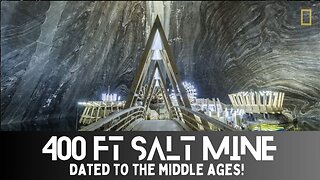 1:35
1:35
The Aquarius Bus
1 month agoHuh? 400-ft. Deep Salt Mine with Carved Balconies Dug During the Middle Ages!
791 -
 LIVE
LIVE
LFA TV
22 hours agoKamala’s $1.4 Billion Campaign Failure | Trumpet Daily 11.27.24 7PM EST
612 watching -
 LIVE
LIVE
2 MIKES LIVE
1 hour ago2 MIKES LIVE #148 Pre-Thanksgiving News Edition!
115 watching -
 39:01
39:01
The Why Files
9 days agoSymbols of Power: Deciphering the Language of the Secret Elite
138K169 -
 1:21:39
1:21:39
The Officer Tatum
4 hours agoLIVE: Kamala's "DRUNKEN" Rant, The Redskins are COMING Back, and More! | OT Show EP 16
35.4K63 -
 1:39:22
1:39:22
Melonie Mac
4 hours agoGo Boom Live Ep 30!
41.5K5 -
 1:20:06
1:20:06
Part Of The Problem
22 hours agoDave Smith | Scott Horton: Provoked | Part Of The Problem 1197
12K44 -
 49:21
49:21
PMG
19 hours ago $0.14 earned"Hannah Faulkner and Jennifer Strickland | WHAT IS THE HEBREW MEANING BEHIND 'WOMAN'?!"
5.31K -
 1:50:34
1:50:34
Film Threat
8 hours agoMOANA 2 + TURKEY DAY HOLIDAY MOVIE JAMBOREE! | Hollywood on the Rocks
30.4K -
 20:35
20:35
Silver Dragons
5 hours agoBullion Dealer Reveals PERFECT STORM for Silver
24.2K4


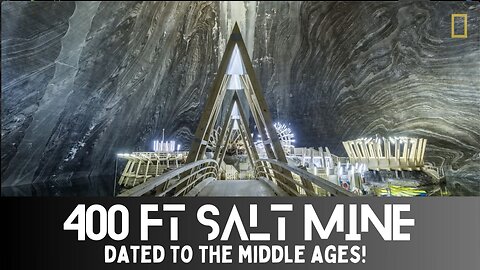
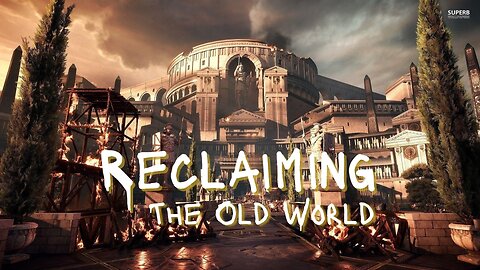
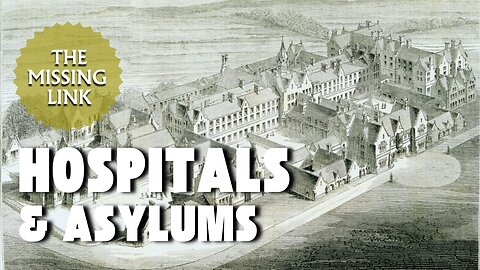
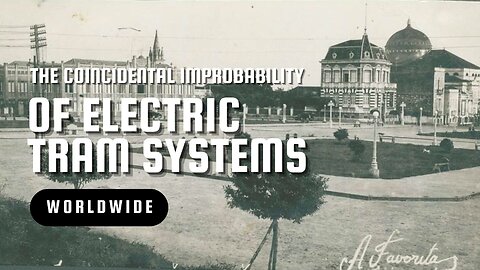




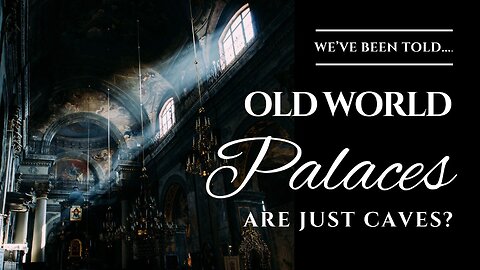
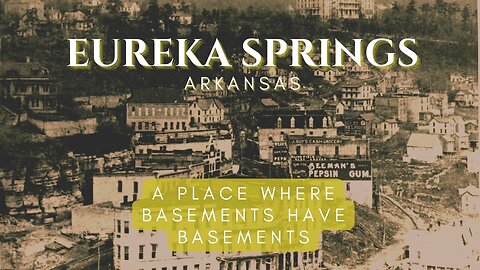


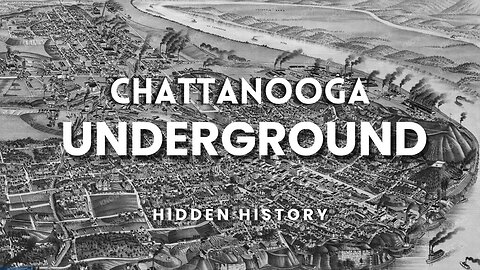
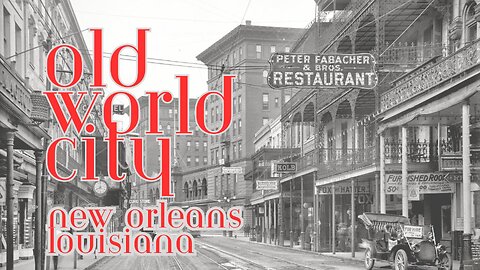


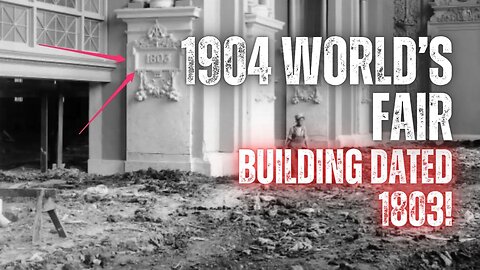



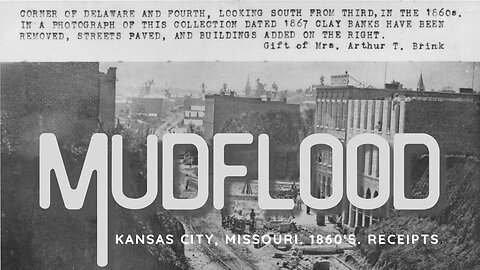
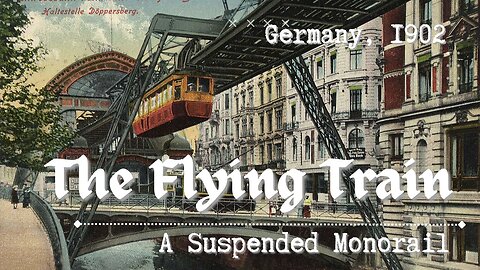









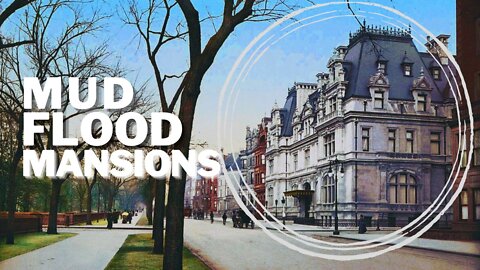




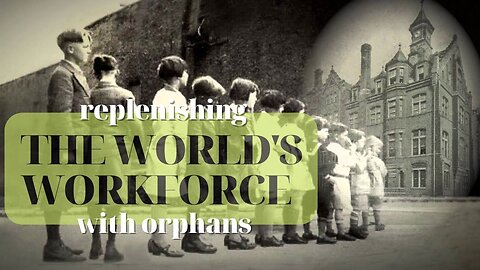

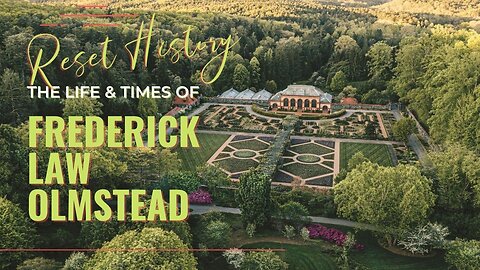

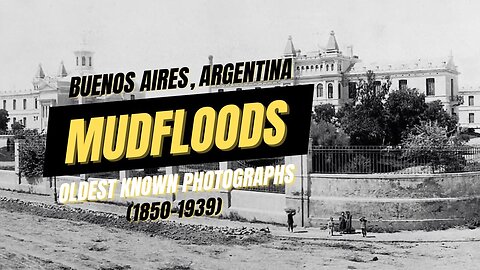


![Was The U.S. Civil War A Staged Photo Psyop? [Not Suitable For Everyone]](https://1a-1791.com/video/s8/1/q/e/u/h/qeuhl.oq1b.2-small-Was-The-U.S.-Civil-War-A-St.jpg)
